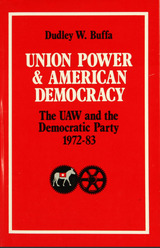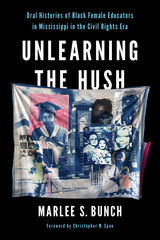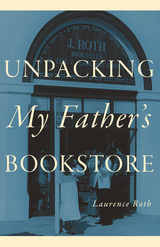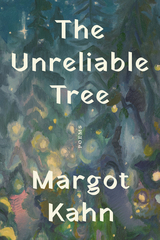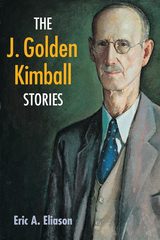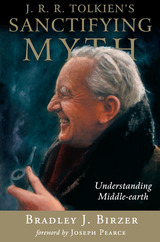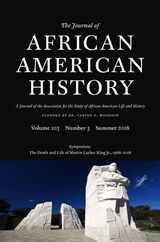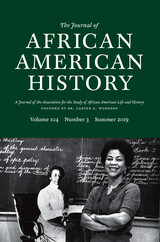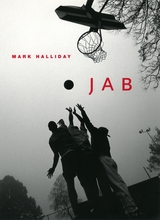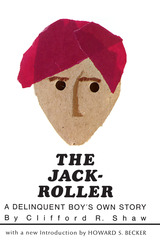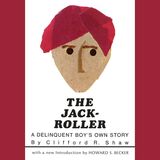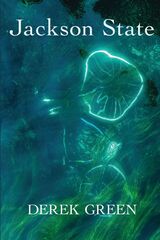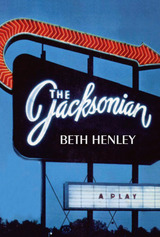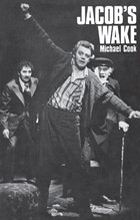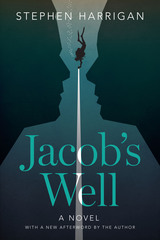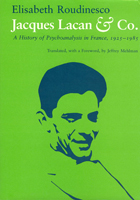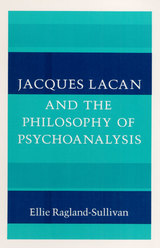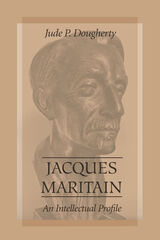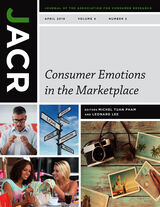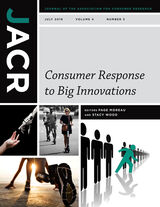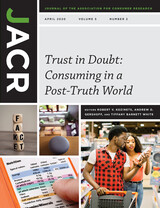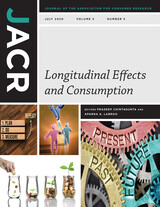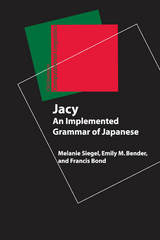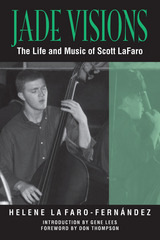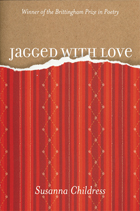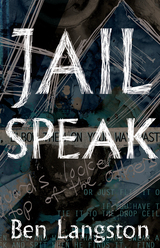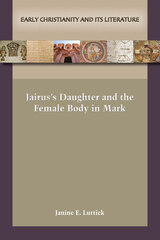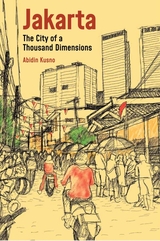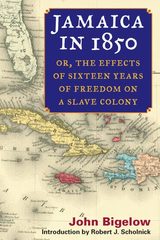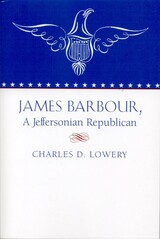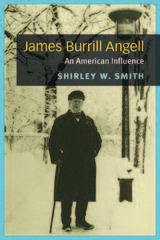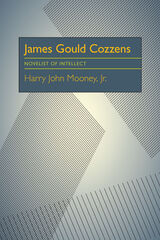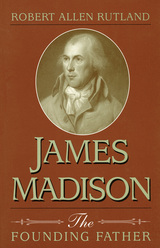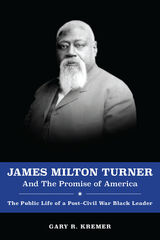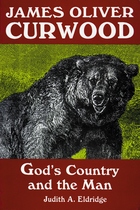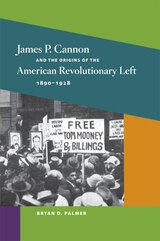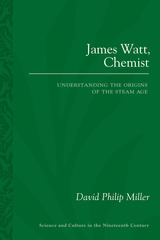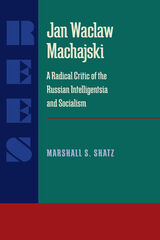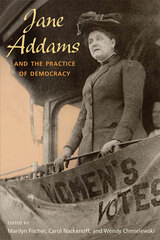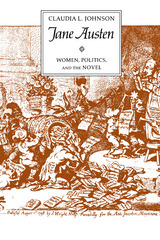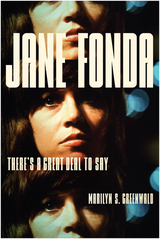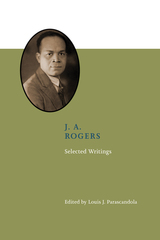 J. A. Rogers: Selected Writings
Louis J. Parascandola
University of Tennessee Press, 2023 “No man living has revealed so many important facts about the Negro race as has Rogers,” wrote W. E. B. DuBois. Indeed, as Henry Louis Gates Jr. contends, J. A. Rogers was often the only source for an ordinary Black person to learn of their history from the 1920s through the 1970s. Now Louis J. Parascandola makes available an accessible collection of Rogers’s writings for a new generation.
Joel Augustus Rogers was born in Negril, Jamaica, in the late nineteenth century, where—although his father was a teacher—he received only basic education. Rogers emigrated to the United States and studied at the Art Institute of Chicago while working as a Pullman porter. He later took up journalism and moved to New York for better opportunities, writing for papers and journals published by the likes of Marcus Garvey, W. E. B. DuBois, and H. L. Mencken. While working with the Pittsburgh Courier, he was assigned to cover the Italo-Ethiopian War (1935–1937), becoming the first American Black foreign war correspondent. His column for the Courier became vital to the Black middle class, conveying stories of Black achievements and relating a distinguished history that imparted knowledge and pride. He continued this work with his books 100 Amazing Facts about the Negro with Complete Proof, the two-volume The World’s Great People of Color 3000 B.C. to 1946 A.D., and the novel From Superman to Man.
This engaging collection represents the wide range of Rogers’s work across time and demonstrates his intellectual philosophy. J. A. Rogers: Selected Writings is required reading for anyone interested in Black nationalism, Black journalism, Black literature, and Pan-African culture and identity.
J. B. Hunt: The Long Haul to Success
Marvin Schwartz
University of Arkansas Press, 1992 This is an enlightening and entertaining history of the Arkansas-based firm, one of America’s premier trucking companies.
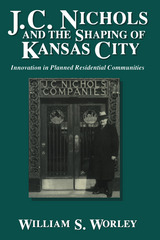 J. C. Nichols and the Shaping of Kansas City: Innovation in Planned Residential Communities
William S. Worley
University of Missouri Press, 1993 Born and reared on the outskirts of Kansas City in Olathe, Kansas, Jesse Clyde Nichols (1880-1950) was a creative genius in land development. He grew up witnessing the cycles of development and decline characteristics of Kansas City and other American cities during the late nineteenth and early twentieth centuries. These early memories contributed to his interest in real estate and led him to pursue his goal of neighborhoods in Kansas City, an idea unfamiliar to that city and a rarity across the United States. J.C. Nichols was one of the first developers in the country to lure buyers with a combination of such attractions as paved streets, sidewalks, landscaped areas, and access to water and sewers. He also initiated restrictive covenants and to control the use of structures built in and around his neighborhoods. In addition, Nichols was involved in the placement of services such as schools, churches, and recreation and shopping areas, all of which were essential to the success of his developments. In 1923, Nichols and his company developed the Country Club Plaza, the first of many regional shopping centers built in anticipation of the increased use of automobiles. Known throughout the United States, the Plaza is a lasting tribute to the creativity of J.C. Nichols and his legacy to the United States. With single-mindedness of purpose and unwavering devotion to achievement, J.C. Nichols left an indelible imprint on the Kansas City metropolitan area, and thereby influenced the design and development of major residential and commercial areas throughout the United States as well. Based on extensive research, J.C. Nichols and the Shaping of Kansas City is a valuable study of one of the most influential entrepreneurs in American land development.
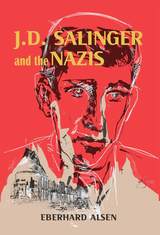 J. D. Salinger and the Nazis
Eberhard Alsen
University of Wisconsin Press, 2018 Before J.D. Salinger became famous for his 1951 novel The Catcher in the Rye and infamous as a literary recluse, he was a soldier in World War II. While serving in the U.S. Army's Counter Intelligence Corps (CIC) in Europe, Salinger wrote more than twenty short stories and returned home with a German war bride. Eberhard Alsen, through meticulous archival research and careful analysis of the literary record, corrects mistaken assumptions about the young writer's war years and their repercussions. Though recent biographies and films claim that Salinger regularly participated in combat, Alsen cites military documents showing that his counterintelligence work was well behind the front lines.
Alsen, a longtime Salinger scholar who witnessed the Nazi regime firsthand as a child in Germany, tracks Salinger's prewar experiences in the army, his work for the CIC during significant military campaigns, and his reactions to three military disasters that killed more than a thousand fellow soldiers in his Fourth Infantry Division. Alsen also identifies the Nazi death camp where Salinger saw mounds of recently burned bodies. Revealing details shed light on Salinger's outspoken disgust for American military leaders, the personality changes that others saw in him after the war, and his avoidance of topics related to the Holocaust.
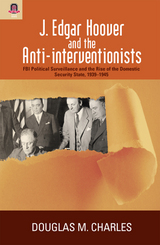 J. Edgar Hoover and the Anti-interventionists: FBI Political Surveillance and the Rise of the Domestic Security State, 1939–1945
Douglas M. Charles
Ohio State University Press, 2007 In this very timely manuscript, Douglas M. Charles reveals how FBI Director J. Edgar Hoover catered to President Franklin D. Roosevelt’s political interests. Between 1939 and 1945, the Federal Bureau of Investigation monitored the political activities of President Roosevelt’s anti-interventionist foreign policy critics. Hoover, whose position as FBI director was tenuous within the left-of-center Roosevelt administration, catered to the president’s political and policy interests in order to preserve his position and to expand FBI authority. In his pragmatic effort to service administration political goals, Hoover employed illegal wiretaps and informers, collected derogatory information, conducted investigations that had the potential to discredit the anti-interventionists, forwarded political intelligence to administration officials, and coordinated some activity with British intelligence. This all occurred within a crisis atmosphere created with the onset of the Second World War, and it was this political dynamic that permitted Hoover to successfully cultivate his relationship with President Roosevelt. In the process, the administration's otherwise legitimate foreign policy opposition—regarded by some as subversive—had their civil liberties violated through intensive FBI scrutiny of their political dissent. Moreover, the FBI’s surveillance marks the origins of the FBI’s role in the later national security state. Among the targets examined in this book are Charles Lindbergh, the America First Committee, notable anti-interventionist senators and congressmen, the anti-interventionist press, and other prominent individuals who advocated American isolation from foreign war.
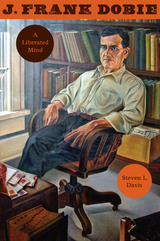 J. Frank Dobie: A Liberated Mind
By Steven L. Davis
University of Texas Press, 2009 The first Texas-based writer to gain national attention, J. Frank Dobie proved that authentic writing springs easily from the native soil of Texas and the Southwest. In best-selling books such as Tales of Old-Time Texas, Coronado's Children, and The Longhorns, Dobie captured the Southwest's folk history, which was quickly disappearing as the United States became ever more urbanized and industrial. Renowned as "Mr. Texas," Dobie paradoxically has almost disappeared from view—a casualty of changing tastes in literature and shifts in social and political attitudes since the 1960s. In this lively biography, Steven L. Davis takes a fresh look at a J. Frank Dobie whose "liberated mind" set him on an intellectual journey that culminated in Dobie becoming a political liberal who fought for labor, free speech, and civil rights well before these causes became acceptable to most Anglo Texans. Tracing the full arc of Dobie's life (1888–1964), Davis shows how Dobie's insistence on "free-range thinking" led him to such radical actions as calling for the complete integration of the University of Texas during the 1940s, as well as taking on governors, senators, and the FBI (which secretly investigated him) as Texas's leading dissenter during the McCarthy era.
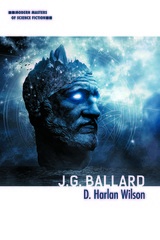 J. G. Ballard
D. Wilson
University of Illinois Press, 2017 Prophetic short stories and apocalyptic novels like The Crystal World made J. G. Ballard a foundational figure in the British New Wave. Rejecting the science fiction of rockets and aliens, he explored an inner space of humanity informed by psychiatry and biology and shaped by surrealism. Later in his career, Ballard's combustible plots and violent imagery spurred controversy--even legal action--while his autobiographical 1984 war novel Empire of the Sun brought him fame. D. Harlan Wilson offers the first career-spanning analysis of an author who helped steer SF in new, if startling, directions. Here was a writer committed to moral ambiguity, one who drowned the world and erected a London high-rise doomed to descend into savagery--and coolly picked apart the characters trapped within each story. Wilson also examines Ballard's methods, his influence on cyberpunk, and the ways his fiction operates within the sphere of our larger culture and within SF itself.
The J. Golden Kimball Stories
Eric A. Eliason
University of Illinois Press, 2007 The sharp wit of a free-thinking Mormon folk hero In The J. Golden Kimball Stories, beloved and iconoclastic Mormon humorist J. Golden Kimball (1853-1938) speaks on death, marriage, love, hell, God, and everything in between. Compiled by Eric A. Eliason from previously unpublished archival resources, this collection of stories, anecdotes, and jokes captures the irreverent comedy and independent thinking that made Kimball so beloved both in and out of his Mormon community. Arranged thematically and framed by short contextual introductions, each chapter presents a colorful portrait of Kimball on topics including tricks, cussing, ministering, chastising, and repentance. A comprehensive introductory essay places Kimball in the context of Mormon history and folklore scholarship.
 J. J. Rousseau: An Afterlife of Words
Eli Friedlander
Harvard University Press, 2004 Eli Friedlander reads Rousseau's autobiography, Reveries of the Solitary Walker, as philosophy. Reading this work against Descartes's Meditations, Friedlander shows how Rousseau's memorable transformation of experience through writing opens up the possibility of affirming even the most dejected state of being and allows the emergence of the innocence of nature out of the ruins of all social attachments. In tracing the re-creation of a human subject in reverie, Friedlander is alive to the very form of the experience of reading the Reveries by showing the ways this work needs to--and in effect does--generate a reader, without betraying Rousseau's utter solitude.
Friedlander's book provides an afterlife for the Reveries in modern philosophy. It constitutes an alternative to the analytic tradition's revival of Rousseau, primarily through Rawls's influential vision of the social contract. It also counters the fate of Rousseau's writings in the continental tradition, determined by and large by Derrida's deconstruction.
Friedlander's reading of the Reveries, a work that has fascinated generations of readers, is an incomparable introduction to one of the greatest thinkers in Western culture.
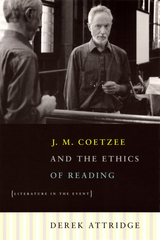 J. M. Coetzee and the Ethics of Reading: Literature in the Event
Derek Attridge
University of Chicago Press, 2004 Nobel Prize-winning novelist J. M. Coetzee is one of the most widely taught contemporary writers, but also one of the most elusive. Many critics who have addressed his work have devoted themselves to rendering it more accessible and acceptable, often playing down the features that discomfort and perplex his readers.
Yet it is just these features, Derek Attridge argues, that give Coetzee's work its haunting power and offer its greatest rewards. Attridge does justice to this power and these rewards in a study that serves as an introduction for readers new to Coetzee and a stimulus for thought for those who know his work well. Without overlooking the South African dimension of his fiction, Attridge treats Coetzee as a writer who raises questions of central importance to current debates both within literary studies and more widely in the ethical arena. Implicit throughout the book is Attridge's view that literature, more than philosophy, politics, or even religion, does singular justice to our ethical impulses and acts. Attridge follows Coetzee's lead in exploring a number of issues such as interpretation and literary judgment, responsibility to the other, trust and betrayal, artistic commitment, confession, and the problematic idea of truth to the self.
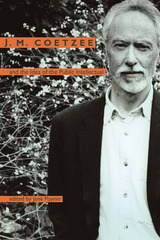 J. M. Coetzee and the Idea of the Public Intellectual
Jane Poyner
Ohio University Press, 2006 In September 2003 the South African novelist J. M. Coetzee was awarded the Nobel Prize for Literature, confirming his reputation as one of the most influential writers of our time. J. M. Coetzee and the Idea of the Public Intellectual addresses the contribution Coetzee has made to contemporary literature, not least for the contentious forays his work makes into South African political discourse and the field of postcolonial studies. Taking the author’s ethical writing as its theme, the volume is an important addition to understanding Coetzee’s fiction and critical thinking. While taking stock of Coetzee’s singular, modernist response to the apartheid and postapartheid situations in his early fiction, the volume is the first to engage at length with the later works, Disgrace, The Lives of Animals, and Elizabeth Costello. J. M. Coetzee and the Idea of the Public Intellectual explores Coetzee’s roles as a South African intellectual and a novelist; his stance on matters of allegory and his evasion of the apartheid censor; his tacit critique of South Africa’s Truth and Reconciliation Commission; his performance of public lectures of his alter ego, Elizabeth Costello; and his explorations into ecofeminism and animal rights. The essays collected here, which include an interview with the Nobel Laureate, provide new vantages from which to consider Coetzee’s writing.
 J. S. Bach's Clavier-Ubung III: The Making of a Print, with a Companion Study of the Canonic Variations on Von Himmel hoch BWV 769
Gregory G. Butler
Duke University Press, 1990 In his study of Bach’s Clavier-Ubung III, Gregory Butler makes a major contribution to organ music and Bach studies by giving to original printed copies of this work the kind of attention normally reserved for manuscripts. He details the work’s chronology, production, aim, and even spiritual program, treating the prints as unique documents with discernible variants and readings.
The need to examine early printed copies of music is being recognized as an important tool which can reveal as much as the study of early manuscripts. Composers themselves frequently took a major role in the preparation of the engraving.
Clavier-Ubung III—arguably the most carefully planned, intellectually conceived, and challenging volume of organ music ever published—is a particularly useful example of Bach’s printed works known chiefly from the print itself. The print is richer in information than any of the other original prints of Bach’s music, making it a distinctly suitable repertory for the author’s innovative treatment. Butler reveals fascinating new information on the genesis and history of the collection’s composition, finding, in part, that sections of the work were composed considerably earlier than previously was believed.
JAAH vol 103 num 3
The University of Chicago Press
University of Chicago Press Journals, 2018
JAAH vol 103 num 4
The University of Chicago Press
University of Chicago Press Journals, 2018
JAAH vol 104 num 1
The University of Chicago Press
University of Chicago Press Journals, 2019
JAAH vol 104 num 2
The University of Chicago Press
University of Chicago Press Journals, 2019
JAAH vol 104 num 3
The University of Chicago Press
University of Chicago Press Journals, 2019
JAAH vol 104 num 4
The University of Chicago Press
University of Chicago Press Journals, 2019
Jab
Mark Halliday
University of Chicago Press, 2002 Human, hunger, happiness, hope, heart, and Halliday all start with h, as does ham. Accident? Maybe! But seldom have the flour of the humanistic and the egg yolk of honesty mixed more swellingly with the yeast of desire and the salt of self-doubt—not to mention the olive paste of ambition.
Halliday has whacked Death and Mutabilitie before, but this time . . . this time he whacks them again. After this Jab, the world will never be the same. Or at least, a few hundred conversations, here and there, will be somewhat affected. Roll over Death, and tell Mutabilitie the news.
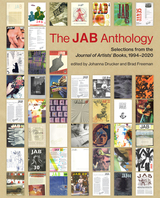 The JAB Anthology: Selections from the Journal of Artists' Books, 1994-2020
Johanna Drucker
University of Iowa Press, 2023 This anthology of articles selected from The Journal of Artists’ Books contains some of the best critical writing on artists’ books produced in the last quarter of a century. Driven by the editorial vision of artist Brad Freeman, JAB began as a provocative pamphlet and expanded to become a significant journal documenting artists’ books from multiple perspectives. With its range of participants and approaches, JAB provided a unique venue for sustained critical writing in the field and developed a broad subscriber base among institutional and private collectors and readers. More than two hundred writers and artists from nearly two dozen countries around the globe were published in its pages.
The JAB Anthology contains contributions by many renowned figures in the field including: Anne Moeglin-Delcroix, Janet Zweig, Monica Carroll, Adam Dickerson, Alisa Scudamore, Mary Jo Pauly, April Sheridan, Doro Boehme, Gerrit Jan de Rook, Océane Delleaux, Brandon Graham, Jérôme Dupeyrat, Ward Tietz, Paulo Silveira, Philip Cabau, Leszek Brogowski, Lyn Ashby, Tim Mosely, Debra Parr, Pedro Moura, Levi Sherman, Catarina Figueiredo Cardoso, Isabel Baraona, and the editors.
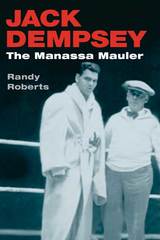 Jack Dempsey: THE MANASSA MAULER
Randy Roberts
University of Illinois Press, 1979 Heavyweight Champion of the World from 1919 to 1926, Jack Dempsey, also known as the Manassa Mauler, began his boxing career as a skinny boy of sixteen, riding the rails and participating in hastily staged saloon bouts against miners and lumberjacks.
In this incisive, fast-paced biography, Randy Roberts charts the life and career of a man widely regarded as one of the toughest ever to enter the ring. He details Dempsey's transition from barroom fights to professional boxing and his emerging reputation for fast, brutal knockouts. Roberts draws on a wealth of newspaper articles and interviews to chronicle Dempsey's rise to the heavyweight championship and his six title defenses. Also included are accounts of the eventual loss of his title to Gene Tunney in 1926, and the rematch in 1927, which Dempsey also lost in the infamous "long count." After continuing to fight in exhibitions, Dempsey retired from boxing in 1940 with an astonishing 64 victories, 49 of them knockouts.
Roberts tells of the building of this record, including accounts of Dempsey's forays into Hollywood, the controversy over his alleged draft-dodging, his long life after retirement, and his enduring legacy as one of the greatest fighters in boxing history.
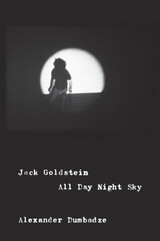 Jack Goldstein: All Day Night Sky
Alexander Dumbadze
University of Chicago Press, 2025 A poignant account of the life and work of conceptual artist Jack Goldstein.
A defining figure of the 1970s–80s New York art world, Jack Goldstein’s wide-ranging body of work, which included immaculate color films and radiant paintings of appropriated images composed by assistants, is both seductive and interpretively elusive. Goldstein’s legacy has been complicated by the mythology of his later years. Consumed by drug addiction, he dropped out of the art world in the 1990s, lived alone in an East Los Angeles trailer park, and resurfaced in a wave of critical fanfare at the turn of the millennium, before taking his own life in 2003.
Employing his signature blend of biography, theoretical reflection, and archival research, Alexander Dumbadze examines Goldstein’s life and career, homing in on the artist’s refusal to distinguish between mental and actual images. Progressing chronologically through key moments in Goldstein’s artistic and intellectual formation, the book offers a deeply complex portrait of this significant artist, along with a nuanced meditation on the nature of images, the meaning of artistic subjectivity, and the consequences of holding unwavering faith in art.
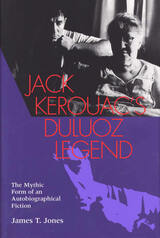 Jack Kerouac's Duluoz Legend: The Mythic Form of an Autobiographical Fiction
James T. Jones
Southern Illinois University Press, 1999
In the only critical examination of all of Jack Kerouac's published prose, James T. Jones turns to Freud to show how the great Beat writer used the Oedipus myth to shape not only his individual works but also the entire body of his writing.
Like Balzac, Jones explains, Kerouac conceived an overall plan for his total writing corpus, which he called the Duluoz Legend after Jack Duluoz, his fictional alter ego. While Kerouac's work attracts biographical treatment—the ninth full-length biography was published in 1998—Jones takes a Freudian approach to focus on the form of the work. Noting that even casual readers recognize family relationships as the basis for Kerouac's autobiographical prose, Jones discusses these relationships in terms of Freud's notion of the Oedipus complex.
After establishing the basic biographical facts and explaining Freud's application of the Oedipus myth, Jones explicates Kerouac's novels of childhood and adolescence, focusing on sibling rivalry. Supporting his contention that the Beat writer worked according to a plan, Jones then shows how Kerouac revised The Town and the City (1950), his first published novel, in Vanity of Duluoz, the last novel published in his lifetime, to de-emphasize the death of the father. He treats three versions of Kerouac's road novel—including On the Road—as versions of Oedipus's fateful journey from Corinth to Thebes. And he argues that Pic, often considered peripheral to the Duluoz Legend, replicates the Oedipal themes.
Jones demonstrates that Maggie Cassidy, The Subterraneans, and Tristessa share a form that results from Kerouac's unresolved rivalry with his father for the love of his mother. He discusses Kerouac's replacement of the destructive brother figures in On the Road and Visions of Cody with the constructive hero of The Dharma Bums. He also shows how the Oedipal structure of the Duluoz Legend applies to Kerouac's nonfiction.
In the penultimate chapter, Jones explains how Big Sur, Kerouac's story of his alcohol-induced nervous breakdown, actually marks the climax of the Duluoz Legend. The alcoholism, Jones insists, is not the cause but a symptom of a breakdown brought on by his attachment to his mother. He shows how Kerouac's obsession with his family repeats Oedipal themes throughout the Duluoz Legend. Finally, he deals with Oedipal themes in Kerouac's nonnarrative work, including Old Angel Midnight, Some of the Dharma, The Scripture of the Golden Eternity, and several poems.
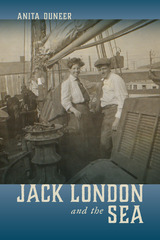 Jack London and the Sea
Anita Duneer
University of Alabama Press, 2022 The first book-length study of London as a maritime writer
Jack London’s fiction has been studied previously for its thematic connections to the ocean, but Jack London and the Sea marks the first time that his life as a writer has been considered extensively in relationship to his own sailing history and interests. In this new study, Anita Duneer claims a central place for London in the maritime literary tradition, arguing that for him romance and nostalgia for the Age of Sail work with and against the portrayal of a gritty social realism associated with American naturalism in urban or rural settings. The sea provides a dynamic setting for London’s navigation of romance, naturalism, and realism to interrogate key social and philosophical dilemmas of modernity: race, class, and gender. Furthermore, the maritime tradition spills over into texts that are not set at sea.
Jack London and the Sea does not address all of London’s sea stories, but rather identifies key maritime motifs that influenced his creative process. Duneer’s critical methodology employs techniques of literary and cultural analysis, drawing on extensive archival research from a wealth of previously unpublished biographical materials and other sources. Duneer explores London’s immersion in the lore and literature of the sea, revealing the extent to which his writing is informed by travel narratives, sensational sea yarns, and the history of exploration, as well as firsthand experiences as a sailor in the San Francisco Bay and Pacific Ocean.
Organized thematically, chapters address topics that interested London: labor abuses on “Hell-ships” and copra plantations, predatory and survival cannibalism, strong seafaring women, and environmental issues and property rights from San Francisco oyster beds to pearl diving in the Paumotos. Through its examination of the intersections of race, class, and gender in London’s writing, Jack London and the Sea plumbs the often-troubled waters of his representations of the racial Other and positions of capitalist and colonial privilege. We can see the manifestation of these socioeconomic hierarchies in London’s depiction of imperialist exploitation of labor and the environment, inequities that continue to reverberate in our current age of global capitalism.
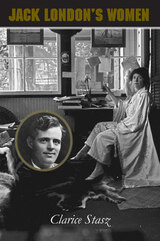 Jack London's Women
Clarice Stasz
University of Massachusetts Press, 2001 At age twenty-three, Jack London (1876–1916) sold his first story, and within six years he was the highest paid and most widely read writer in America. To account for his success, he created a fiction of himself as the quintessential self-made man. But as Clarice Stasz demonstrates in this absorbing collective biography, London always relied on a circle of women who nurtured him, sheltered him, and fostered his legacy.
Using newly available letters and diaries from private collections, Stasz brings this diverse constellation of women to life. London was the son of freethinking Flora Wellman, yet found more maternal comfort from freed slave Jennie Prentiss and his stepsister Eliza. His early loves included a British-born consumptive, a Jewish socialist, and an African American. His first wife, Bess Maddern, was a teacher and devoted mother to daughters Bess and Joan, while his second wife, Charmian Kittredge, shared his passion for adventure and served as a model for many characters in his writings. Following his death, the various women who survived him both promoted his legacy and suffered the consequences of being constantly identified with a famous man.
In recasting London's life through the eyes of three generations of women, Stasz manages to untangle his seemingly contradictory attitudes and actions. She also reveals the struggle that ensued, after his death, among family members and scholars over how he should be remembered. What emerges from this well-researched book is a new understanding of London and a compelling portrayal of the women who knew him best.
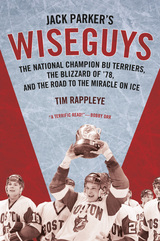 Jack Parker's Wiseguys: The National Champion BU Terriers, the Blizzard of ’78, and the Road to the Miracle on Ice
Tim Rappleye
University Press of New England, 2017 Over the winter of 1977–78, anyone within shouting distance of a two-mile stretch of Boston’s Commonwealth Avenue—from Fenway Park to the trolley curve at Packard’s Corner—found themselves pulled into the orbit of college hockey. The hottest ticket in a sports-mad city was Boston University’s Terriers, a team so tough it was said they didn’t have fans—they took hostages. Eschewing the usual recruiting pools in Canada, Jack Parker and his coaching staff assembled a squad that included three stars from nearby Charlestown, then known as the “armed robbery capital of America.” Jack Parker’s Wiseguys is the story of a high-flying, headline-dominating, national championship squad led by three future stars of the Miracle on Ice, the medal-round game the 1980 U.S. Olympic hockey team won against the heavily favored Soviet Union. Now retired, Parker is a thoughtful statesman for the sport, a revered figure who held the longest tenure of any coach in Boston sports history. But during the 1977–78 season, he was just five years into his reign—and only a decade or so older than his players. Fiery, mercurial, as tough as any of his tough guys, Parker and his team were to face the pressure-cooker expectations of four previous also-ran seasons, further heightened by barroom brawls, off-the-ice shenanigans, and the citywide shutdown caused by one of the biggest blizzards to ever hit the Northeast. This season was to be Parker’s watershed, a roller-coaster ride of nail-biting victories and unimaginable tragedy, played out in increasingly strident headlines as his team opened the season with an unprecedented twenty-one straight wins. Only the second loss of the year eliminated the Terriers from their league playoffs and possibly from national contention; hours after the game Parker’s wife died from cancer. The story of how the team responded—coming back to win the national championship a week after Parker buried his wife—makes a compelling tale for Boston sports fans and everyone else who feels a thrill of pride at America’s unlikely win over the Soviet national team—a victory forged on Commonwealth Avenue in that bitter, beautiful winter of ’78.
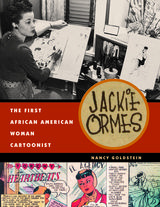 Jackie Ormes: The First African American Woman Cartoonist
Nancy Goldstein
University of Michigan Press, 2008 At a time of few opportunities for women in general and even fewer for African American women, Jackie Ormes (1911–85) blazed a trail as a popular cartoonist with the major black newspapers of the day. Her cartoon characters (including Torchy Brown, Candy, Patty-Jo, and Ginger) delighted readers and spawned other products, including an elegant doll with a stylish wardrobe and “Torchy Togs” paper dolls. Ormes was a member of Chicago’s black elite, with a social circle that included the leading political figures and entertainers of the day. Her cartoons and comic strips provide an invaluable glimpse into American culture and history, with topics that include racial segregation, U.S. foreign policy, educational equality, the atom bomb, and environmental pollution, among other pressing issues of the times—and of today’s world as well. This celebrated biography features a large sampling of Ormes’s cartoons and comic strips, and a new preface.
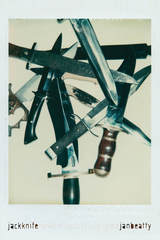 Jackknife: New and Selected Poems
Jan Beatty
University of Pittsburgh Press, 2017 In Jackknife: New and Selected Poems, Beatty travels the turns and collisions of over twenty years of work. She moves from first-person narratives to poems that straddle the page in fragments, to lines that sprawl with long lines of train tracks. Always landing in meaning, we are inside the body—not in a confessional voice, not autobiography—but arriving through the expanded, exploded image of many stories and genders.
The new poems leap imagistically from the known world to the purely imagined, as in the voice in "Abortion with Gun Barrel": "I am the counselor,/there are cracks in the barrel of the gun/there is aiming/shots of sorrow—/ shots of light.” Commitment to a rabid feminist voice continues, but arrival has a new ring to it, with beginnings rescripted: “I am a bastard./I walk around in this body of mine."
Beatty’s fascination with the highway and the breakout West jackknifes at the crossroads of the brutal and the white plains of loss—the body torn down and resurrected in the twenty first century.
The Jack-Roller: A Delinquent Boy's Own Story
Clifford R. Shaw
University of Chicago Press, 1966 The Jack-Roller tells the story of Stanley, a pseudonym Clifford Shaw gave to his informant and co-author, Michael Peter Majer. Stanley was sixteen years old when Shaw met him in 1923 and had recently been released from the Illinois State Reformatory at Pontiac, after serving a one-year sentence for burglary and jack-rolling (mugging),
Vivid, authentic, this is the autobiography of a delinquent—his experiences, influences, attitudes, and values. The Jack-Roller helped to establish the life-history or "own story" as an important instrument of sociological research. The book remains as relevant today to the study and treatment of juvenile delinquency and maladjustment as it was when originally published in 1930.
The Jack-Roller: A Delinquent Boy's Own Story
Clifford R. Shaw
University of Chicago Press, 1966 This is an auto-narrated audiobook version of this book.
The Jack-Roller tells the story of Stanley, a pseudonym Clifford Shaw gave to his informant and co-author, Michael Peter Majer. Stanley was sixteen years old when Shaw met him in 1923 and had recently been released from the Illinois State Reformatory at Pontiac, after serving a one-year sentence for burglary and jack-rolling (mugging),
Vivid, authentic, this is the autobiography of a delinquent—his experiences, influences, attitudes, and values. The Jack-Roller helped to establish the life-history or "own story" as an important instrument of sociological research. The book remains as relevant today to the study and treatment of juvenile delinquency and maladjustment as it was when originally published in 1930.
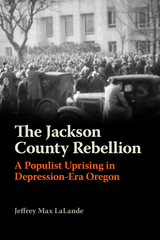 The Jackson County Rebellion: A Populist Uprising in Depression-Era Oregon
Jeffrey Max LaLande
Oregon State University Press, 2023 The Jackson County Rebellion explores a dramatic if little-known populist insurgency in the American West. Author Jeff LaLande takes a deep dive into a tumultuous uprising that captured national attention as it played out in rural Oregon. First tracing its roots back to the area’s tradition of protest, including the Ku Klux Klan of the 1920s, he focuses on Jackson County’s politics of upheaval during the worst days of the Great Depression. The broad strokes of the episode may be familiar to contemporary readers: Demagogues fanning rage — relentlessly accusing an elite of corruption and conspiracy. The strife-torn episode featured nativist and anti-Semitic elements. The local press played a key role in the events. Two inflammatory newspapers, one owned by wealthy orchardist Llewellyn Banks and the other by politician Earl Fehl, became the vehicles by which these men won the loyalty of rural and working-class residents. Partners in demagoguery, Banks and Fehl created a movement — dubbed the “Good Government Congress” that very nearly took over county government through direct action, ballot theft, and threats of violence. Among those opposing the two men was Harvard-educated Robert Ruhl, owner/editor of the Medford Mail-Tribune, who faced off against Banks and Fehl. Despite boycotts and threats of sabotage. Ruhl ran a resolute editorial campaign against the populist threat in his Mail-Tribune, which won a Pulitzer Prize for its reporting on the uprising. The rebellion blazed hotly but not for long. Its end was marked by the arrest of its leaders after the fiercely contested 1932 election and by Banks’s murder of the police officer sent to arrest him. Placing the Jackson County Rebellion squarely within America’s long tradition of populist uprisings against the perceived sins of an allegedly corrupt, affluent local elite, LaLande argues that this little-remembered episode is part of a long history of violent conflict in the West that continues today.
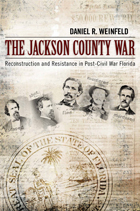 The Jackson County War: Reconstruction and Resistance in Post–Civil War Florida
Daniel R. Weinfeld
University of Alabama Press, 2023 Offers original conclusions explaining why Jackson County became the bloodiest region in Reconstruction Florida From early 1869 through the end of 1871, citizens of Jackson County, Florida, slaughtered their neighbors by the score. The nearly three year frenzy of bloodshed became known as the Jackson County War. The killings, close to one hundred and by some estimates twice that number, brought Jackson County the notoriety of being the most violent county in Florida during the Reconstruction era. Daniel R. Weinfeld has made a thorough investigation of contemporary accounts. He adds an assessment of recently discovered information, and presents a critical evaluation of the standard secondary sources. The Jackson County War focuses on the role of the Freedmen’s Bureau, the emergence of white “Regulators,” and the development of African American political consciousness and leadership. It follows the community’s descent after the Civil War into disorder punctuated by furious outbursts of violence until the county settled into uneasy stability seven years later. The Jackson County War emerges as an emblem of all that could and did go wrong in the uneasy years after Appomattox and that left a residue of hatred and fear that endured for generations.
 Jackson Pollock: Psychoanalytic Drawings
Claude Cernuschi
Duke University Press Perhaps no aspect of Jackson Pollock's oeuvre—one of the most important American artists of the twentieth century—has been more misunderstood than the drawings Pollock created during Jungian psychoanalysis sessions from 1939–40. Presented to his psychotherapist, where they remained in private files for almost three decades until their publication in 1970, these drawings have been shrouded in both personal and art-historical controversy—from a lawsuit filed by Pollock's widow, Lee Krasner, to wide-ranging justifications of them as Jungian iconography or as "proof" of Pollock's supposed mental disorder.
Published in conjunction with an exhibition touring the United States, this book draws together sixty–nine drawings and one gouache, beautifully reproduced in accurate color for the first time. The images reveal a range of styles, from highly refined and elaborate sketches to rapid and automatic improvisations, as well as a range of subjects, from human figures, animals, and cryptic figures to purely abstract forms. Together, they bear witness to Pollock's intense interest in the latest contemporary art as well as non-Western traditions.
Art historian Claude Cernuschi's essay addresses key historical and interpretive questions surrounding these drawings: what was their intended purpose?; do they have particular psychoanalytic importance? what is the relationship between psychoanalysis and art? Ultimately, Cernuschi argues for the importance of reintegrating these works into their rightly held place in Pollock's oeurve. Remarkable for their beauty as well as spontaneity, these drawings reflect the conscious intellectual choice of an artist blazing new trails.
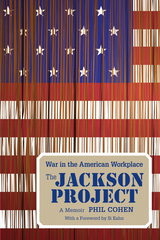 The Jackson Project: War in the American Workplace
Phil Cohen
University of Tennessee Press, 2016 “When it comes to the issues confronting working people and their unions today, Phil Cohen knows what he’s talking about as few people do. . .through knowledge born og bare-knuckle-experience.”—Si Kahn
In the spring of 1989, union organizer Phil Cohen journeyed to Jackson, Tennessee, to sort out the troubled situation at a historic cotton mill. His task as a representative of the Amalgamated Clothing and Textile Workers Union was to rebuild a failing local and the problems were daunting; an anti-union company in financial disarray, sharply declining union membership, and myriad workplace grievances. In the tumultuous months ahead, ownership of the plant twice switched hands, and he would come to fear for his life and consider desperate measures to salvage the union’s cause.
In this riveting memoir, Cohen takes the reader from the union hall and factory gates to the bargaining table and courtroom, and ultimately to the picket line. We see him winning the trust of disillusioned union members, negotiating with a hostile employer and its high-powered legal counsel, and hitting the pavement with leaflets and union cards in hand. We get to know the millworkers with whom he formed close bonds, including a stormy romance with a young woman at the plant. His up-close account of the struggle brims with telling descriptions of the negotiating process, the grinding work at the textile mill, the lives of its employees outside the workplace, and the grim realities of union busting in America. When the organizer’s four-year-old daughter accompanies him to the field, a unique an unexpected dimension is added to the chronicle.
A compelling, dramatic story that alternated between major triumphs and frustrating setbacks, The Jackson Project provides a rare look at the labor movement in the American South from an insider’s perspective.
PHIL COHEN left home at sixteen, managed a skid-row hotel and drove taxis in New York City before moving to Chapel Hill, North Carolina, where he became a union activist while working as a municipal bus driver. In 1988 he joined the staff of ACTWU (now known as Workers United), from which he has since retired. An accomplished singer-songwriter, he has recorded four albums with vocalist Patricia Ford.
Jackson State
Derek Green
Carnegie Mellon University Press, 2025 Unflinching and deeply human—Derek Green perfectly encapsulates the quiet dramas of modern America.
The characters in Jackson State live in a land of contradictions—where wealth and poverty, beauty and decay, hope and despair exist side by side. In this striking collection, Derek Green brings the American Midwest to life, tracing the tensions of class and race through intimate, unforgettable stories.
A father’s protective instinct threatens to unravel his family. A single mother must confront the dangers lurking outside her door. Two siblings navigate the fallout of their father’s militia ties. On the shores of Lake Michigan, a prodigal daughter’s return forces a reckoning with the past. With sharp prose and stark realism, Green captures the struggles and complexities of contemporary American life, establishing Green as a storyteller in the tradition of Carver, Updike, and Cheever.
The Jacksonian: A Play
Beth Henley
Northwestern University Press, 2014 In The Jacksonian, Beth Henley returns to the Southern Gothic storytelling that made her reputation with both critics and audiences. Set in a seedy motel in Jackson, Mississippi, in 1964, the play centers around Rosy, a troubled teenager, and Bill, her dentist father who has been living at the motel for several months as his wife, Susan, considers the disgrace of divorce. Fred, the motel bartender, and Eva, a waitress, are locked in a gruesome pact: he’ll marry her if she agrees to help him evade punishment for a hideous crime. But Bill, turning to nitrous oxide to ease the pain of his life collapsing around him, is a convenient target for Eva’s desperate desire for companionship. At the height of the violence associated with the civil rights movement, these characters gradually reveal the shameful secrets and psychological turmoil just beneath the surface of their insistent Southern gentility.
Jacksonian America: Society, 0ality, and Politics
Edward Pessen
University of Illinois Press, 1985 A perennial choice for courses on antebellum America, Jacksonian America continues to be a popular classroom text with scholars of the period, even among those who bridle at Pessen's iconoclastic views of Old Hickory and his "inegalitarian society."
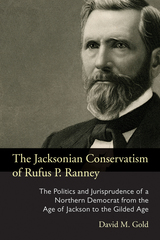 The Jacksonian Conservatism of Rufus P. Ranney: The Politics and Jurisprudence of a Northern Democrat from the Age of Jackson to the Gilded Age
David M. Gold
Ohio University Press, 2016 Ohio’s Rufus P. Ranney embodied many of the most intriguing social and political tensions of his time. He was an anticorporate campaigner who became John D. Rockefeller’s favorite lawyer. A student and law partner of abolitionist Benjamin F. Wade, Ranney acquired an antislavery reputation and recruited troops for the Union army; but as a Democratic candidate for governor he denied the power of Congress to restrict slavery in the territories, and during the Civil War and Reconstruction he condemned Republican policies. Ranney was a key delegate at Ohio’s second constitutional convention and a two-time justice of the Ohio Supreme Court. He advocated equality and limited government as understood by radical Jacksonian Democrats. Scholarly discussions of Jacksonian jurisprudence have primarily focused on a handful of United States Supreme Court cases, but Ranney’s opinions, taken as a whole, outline a broader approach to judicial decision making. A founder of the Ohio State Bar Association, Ranney was immensely influential but has been understudied until now. He left no private papers, even destroying his own correspondence. In The Jacksonian Conservatism of Rufus P. Ranney, David M. Gold works with the public record to reveal the contours of Ranney’s life and work. The result is a new look at how Jacksonian principles crossed the divide of the Civil War and became part of the fabric of American law and at how radical antebellum Democrats transformed themselves into Gilded Age conservatives.
 The Jacksons and the Lees: Two Generations of Massachusetts Merchants, 1765–1844
Kenneth Wiggins Porter
Harvard University Press In the wealth of hitherto inaccessible material from family archives, presented in these two volumes, students of general American history and of business history will find an unusual picture of the actual business of carrying on trade between New England and the Orient in our early national period. The numerous mercantile letters here reproduced show how Salem, Newburyport, and Beverly, as well as Boston, were connected commercially and culturally with the rest of the world. At the same time they present the important transition in New England economic life when business men were transferring their capital and ability from foreign commerce to regional manufacture, transportation, and trade. A long general Introduction describes the training and operation of the sedentary merchant and the effect upon business from the family connections among the various merchants.
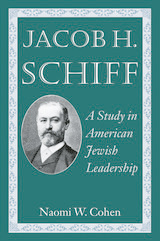 Jacob H. Schiff: A Study in American Jewish Leadership
Naomi W. Cohen
Brandeis University Press, 1999 The life of Jacob Schiff (1847 - 1920), banker, financier, and leader of the American Jewish community from 1880 to 1920, is in many ways the quintessential story of an immigrant's success in America. Born in Frankfurt in 1847, Schiff worked in several financial firms in Germany and the US before accepting a position at the New York banking firm of Kuhn, Loeb & Company in 1875 and settling for good in America. Part of a wealthy and powerful German Jewish circle that included the Warburgs and Rothschilds, Schiff played a central role in shaping American and European Jewish history. From his base on Wall Street, he was the foremost Jewish leader in what became known as the "Schiff era," grappling with all major issues and problems of the day, including the plight of Russian Jews under the czar, American and international anti-Semitism, care of needy Jewish immigrants, and the rise of Zionism. Based on a broad range of primary sources, Naomi W. Cohen's study emphasizes the role Schiff played as the preeminent leader of American Jewry at the turn of the century.
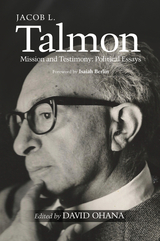 Jacob L. Talmon: Mission and Testimony: Political Essays
David Ohana
Sussex Academic Press, 2022 Isaiah Berlin, in his "Tribute to a Friend", wrote about the historian Jacob L. Talmon (1916-1980): "No matter what his theoretical interests were, or the topics on which he was lecturing or writing, his deepest concern was with the Jewish people, its history, its religious, moral and social values, its place among the nations, its future in Israel and the diaspora." These words capture the essence of Talmon's political essays presented in Mission and Testimony. Talmon was chosen by an international committee of scholars as one of the twenty major historians of the twentieth century, declaring that "his historiography was a convincing apologia for human freedom." He owes his fame primarily to his magnum opus, the trilogy that began with The Origins of Totalitarian Democracy (1952), continued with Political Messianism (1960) and concluded with The Myth of the Nation and the Vision of Revolution (1981). This edited collection of Talmon's essays comprises the following: Part I, "The Nature of Jewish history", deals with the Jewish presence in history, the universal significance of Jewish history, and the impact of Jewish intellectuals. Part II, "From Anti-Semitism to the Holocaust", concerns the anti-Semitic climate of opinion that led to the Holocaust. Part III depicts the regional and global situation of the State of Israel. In Part IV, "Intellectual and Political Debates", Talmon confronts intellectuals and statesmen such as Arnold Toynbee and Menachem Begin. Part V, "Profiles in History", depicts the intellectual portraits of the historian Lewis Namier and the physicist and champion of human rights Andrei Sakharov.
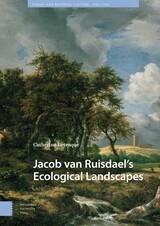 Jacob van Ruisdael’s Ecological Landscapes
Catherine Levesque
Amsterdam University Press, 2024 This book examines Jacob van Ruisdael's treatment of five subjects—dunes, grainfields, ruins, rushing water, and woodlands—that recur throughout his career. The paintings, though fictive, show close attention to the complexities of particular environments that can be fruitfully considered “ecological.” The pattern of Ruisdael’s reworking each environment and associated phenomena shows him as laboring over these themes. His work across media conveys something of his demanding and methodical procedure as he sought to achieve pictorially the force, temporality, vitality, and motion of nature. Ruisdael’s paintings decenter humankind within familiar yet reimagined landscapes. His ability to depict nature’s dynamism provided an alternative vision at a foundational moment when landscape, increasingly manipulated and controlled, was most often considered property and investment. His focus on the techniques and processes of his own work to render these entities was essential to his ecological perspective and invites a similar recognition from an attentive viewer.
Jacob's Wake
Michael Cook
Talon Books, 1975 A Maritime family’s tragedy, set in a raging storm. Cast of two women and five men.
 Jacobins and Utopians: The Political Theory of Fundamental Moral Reform
George Klosko
University of Notre Dame Press, 2003 Jacobins and Utopians examines the politics of ideal societies and the means necessary to bring them into existence. George Klosko reveals how discussions of fundamental moral reform lead inexorably to questions of political power. Machiavelli classically articulated the claim that unarmed prophets go to the gallows. Themes of revolution play an integral role in Klosko’s study—as the figures he explores frequently concerned themselves with the means of becoming armed.
Klosko focuses particularly on what he calls “educational realism” as a means of channeling political power in pursuit of moral reform. If people are to become fit for an ideal society they must be subjected to intensive education, which in turn requires control of the educational environment and, consequently, of society as a whole. Klosko identifies Plato as an educational realist and contends that Plato, contrary to his reputation as a pure utopian, actually provides a searching analysis of the role of political power in fundamental moral reform. In addition to Plato, Jacobins and Utopians canvasses strategies of moral reform proposed by Plutarch's Lycurgus, Socrates, Thomas More, Machiavelli, Robespierre, Saint-Just, Bakunin, Charles Fourier, Marx, and Lenin. Klosko analyzes both the advantages of Jacobinism as a political strategy and its inherent flaws.
Jacob's Well: A Novel
By Stephen Harrigan
University of Texas Press, 2014 Originally published in 1984, Stephen Harrigan’s passionate, emotionally intense second novel takes readers deep into the mysterious passageways of a Central Texas aquifer—and of the human heart. This edition includes a new afterword by the author.
 Jacob’s Younger Brother: Christian-Jewish Relations after Vatican II
Karma Ben-Johanan
Harvard University Press, 2022 A Seminary Co-op Notable Book
“An astute and evenhanded study of how both faiths view themselves and each other.”
—Publishers Weekly
“An illuminating and important new book…An intellectual, cultural, and political challenge…[F]or anyone for whom the Jewish-Christian story is an important element in defining his or her identity.”
—Israel Jacob Yuval, Haaretz
“An extraordinarily sophisticated, insightful and provocative examination of how Roman Catholics and Orthodox Jews addressed the prospect of reconciliation in the second half of the twentieth century.”
—Glenn C. Altschuler, Jerusalem Post
“A volume from which both Jewish and Catholic scholars may learn…This is an excellent book.”
—Eugene J. Fisher, Catholic News Service
A new chapter in Jewish-Christian relations opened in the second half of the twentieth century when the Second Vatican Council exonerated Jews from the accusation of deicide and declared that the Jewish people had never been rejected by God. In a few carefully phrased statements, two millennia of deep hostility were swept into the trash heap of history.
But old animosities die hard. While Catholic and Jewish leaders publicly promoted interfaith dialogue, doubts remained behind closed doors. Drawing on extensive research in contemporary rabbinical literature, Karma Ben-Johanan shows that Jewish leaders welcomed the Catholic condemnation of antisemitism but were less enthusiastic about the Church’s sudden urge to claim their friendship. Catholic theologians hoped Vatican II would turn the page on an embarrassing history, while Orthodox rabbis, in contrast, believed they were finally free to say what they thought of Christianity.
Jacob’s Younger Brother pulls back the veil of interfaith dialogue to reveal how Orthodox rabbis and Catholic leaders spoke about each other when outsiders were not in the room. There Ben-Johanan finds Jews reluctant to accept the latest whims of a Church that had unilaterally dictated the terms of Jewish-Christian relations for centuries.
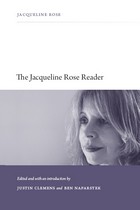 The Jacqueline Rose Reader
Jacqueline Rose
Duke University Press, 2011 Jacqueline Rose is a world-renowned critic and one of the most influential and provocative scholars working in the humanities today. She is also among the most wide ranging, with books on Zionism, feminism, Sylvia Plath, children’s fiction, and psychoanalysis. During the past decade, through talks and pieces that Rose has contributed to the London Review of Books, the Guardian, and other publications, she has played a vital role in public debate about the policies and human-rights record of Israel in its relation to the Palestinians. Representing the entire spectrum of her writing, The Jacqueline Rose Reader brings together essays, reviews, and book excerpts, as well as an extract from her novel. In the introduction, the editors provide a profound overview of her intellectual trajectory, highlighting themes that unify her diverse work, particularly her commitment to psychoanalytic theory as a uniquely productive way of analyzing literature, culture, politics, and society. Including extensive critical commentary, and a candid interview with Rose, this anthology is an indispensable introduction for those unfamiliar with Jacqueline Rose’s remarkably original work, and an invaluable resource for those well acquainted with her critical acumen.
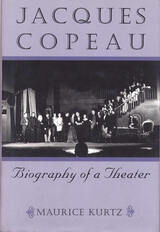 Jacques Copeau: Biography of a Theater
Maurice Kurtz
Southern Illinois University Press, 1999
The French writer, editor, and drama critic Jacques Copeau (1879–1949) opened his Théâtre du Vieux-Colombier in Paris in 1913. Copeau was well on his way to exerting a major influence in the theater in the year that saw the end of the career of the dominant innovator of an earlier generation, André Antoine, whose Théâtre Libre (Free Stage) had featured an uncompromising realism.
In marked contrast to Antoine, Copeau returned the poetry and freshness to Shakespeare and Moliére. By May 1914, Paris and Europe had recognized his genius and his special gift to the theater. Yet like Antoine, Copeau wanted to sweep "staginess" from the stage, to banish overacting, overdressing, and flashy house trappings. To cleanse the stage of its artificiality, he created a fixed, architectural acting space where dramatic literature and theater technique could live in harmony and thrive in freedom of thought and movement. A major part of his program was teaching actors and actresses their craft.
Maurice Kurtz points out that the Théâtre du Vieux-Colombier incarnates the "ideal of Copeau's stubborn struggle to remain strong in the face of indifference, independent in the face of success, proud in the face of defeat. It is the story of group spirit in its purest, most eloquent form, the spirit of personal sacrifice of all for the dignity of their art."
Kurtz here re-creates the vitality Copeau imbued in theater artists throughout the world. He conveys Copeau's enthusiasm, the crusading spirit that enabled Copeau and his Théâtre du Vieux-Colombier to transform experimentation into tradition, into the heritage of civilization. He has written a biography of a theater that was tremendously influential in Europe and America.
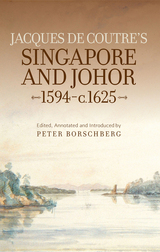 Jacques de Coutre's Singapore and Johor 1594-c. 1625
Edited by Peter Borschberg
National University of Singapore Press, 2015 The Flemish gem trader Jacques de Coutre visited Southeast Asia in the early 17th century, and his lengthy account of his experiences provides a glimpse of Singapore, Johor and the Straits of Melaka during an era for which little written material has survived. This special edition, which presents highlights from the full translation, is designed to provide students, teachers and the wider public with a glimpse of this tumultuous region when it was still controlled by local rulers, and Western colonialism was just gaining a foothold. The author describes dangerous intrigues involving fortune hunters and schemers, as well as local rulers and couriers, adventures that on several occasions nearly cost him his life.
The manuscripts come from a bundle of documents preserved at the National Library of Spain in Madrid that includes De Coutre’sautobiography and several memorials to the Crowns of Spain and Portugal. Chapters from the autobiography have been excerpted from book I, which covers the writer’s life in Southeast Asia between 1593 and 1603. A glossary and list of place names provide information about officials, goods and places mentioned in the text that will be unfamiliar to readers of English.
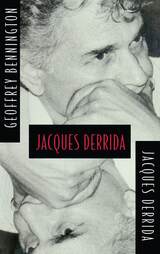 Jacques Derrida
Geoffrey Bennington and Jacques Derrida
University of Chicago Press, 1993 This extraordinary book offers a clear and compelling biography of Jacques Derrida along with one of Derrida's strangest and most unexpected texts. Geoffrey Bennington's account of Derrida leads the reader through the philosopher's familiar yet widely misunderstood work on language and writing to the less familiar themes of signature, sexual difference, law, and affirmation. In an unusual and unprecedented "dialogue," Derrida responds to Bennington's text by interweaving Bennington's text with surprising and disruptive "periphrases." Truly original, this dual and dueling text opens new dimensions in Derrida's thought and work.
"Bennington is a shrewd and well-informed commentator whose book should do something to convince the skeptics . . . that Jacques Derrida's work merits serious attention."—Christopher Norris, New Statesman & Society
"Geoffrey Bennington and Jacques Derrida have presented a fascinating example of what might be called post-structuralist autobiography."—Laurie Volpe, French Review
"Bennington's account of what Derrida is up to is better in almost all respects—more intelligent, more plausible, more readable, and less pretentious—than any other I have read."—Richard Rorty, Contemporary Literature
Jacques Lacan & Co: A History of Psychoanalysis in France, 1925-1985
Elisabeth Roudinesco
University of Chicago Press, 1990 "Roudinesco provides a finely drawn map of the intellectual debates within French psychoanalysis, especially under the influence of the German emigrés during the 1930s and 1940s. She is a good historian, in that she provides not only a narrative history but also extensive passages from Lacan's own oral-history interviews with the various figures, so that we have not only her commentary but some flavor of the original documentation. Many of the quotes are gems."—Sander I. Gilman, Bulletin of the History of Medicine
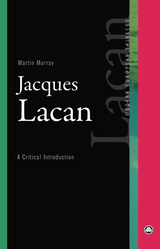 Jacques Lacan: A Critical Introduction
Martin Murray
Pluto Press, 2016
French psychoanalyst Jacques Lacan has been a major influence on a wide range of twentieth-century thought, even as the breadth, complexity, and obscurity of his work has intimidated students and deterred casual readers. That situation hasn’t been helped by uneven translations into English that have led to a popular conception of his intellectual enterprise that can at times be profoundly mistaken.
In this brief, clearly written introduction to Lacan and his work, Martin Murray presents an up-to-date survey of his key concepts, their development, and their influence on fields such as anthropology, linguistics, and philosophy. Arguing strongly that we should move beyond the traditional focus on Lacan’s early work, which favored a linguistic approach, Murray offers instead a more comprehensive overview of the whole arc of Lacan’s thought. The result is a rigorous, yet accessible, account of one of the key intellectual figures of the twentieth century.
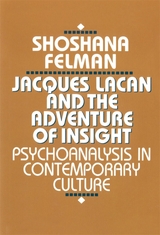 Jacques Lacan and the Adventure of Insight: Psychoanalysis in Contemporary Culture
Shoshana Felman
Harvard University Press, 1987 Jacques Lacan, one of the most influential and controversial French thinkers of the twentieth century, was a practicing and teaching psychoanalyst in Paris, but his revolutionary seminars on Freud reached out far beyond professional circles: they were enthusiastically attended by writers, artists, scientists, philosophers, and intellectuals from many disciplines.
Shoshana Felman elucidates the power and originality of Lacan’s work. She brilliantly analyzes Lacan’s investigation of psychoanalysis not as dogma but as an ongoing self-critical process of discovery. By focusing on Lacan’s singular way of making Freud’s thought new again—and of thus enabling us to participate in the very moment of intellectual struggle and insight—Felman shows how this moment of illumination has become crucial to contemporary thinking and has redefined insight as such. This book is a groundbreaking statement not only on Lacan but on psychoanalysis in general.
Felman argues that, contrary to popular opinion, Lacan’s preoccupation is with psychoanalytic practice rather than with theory for its own sake. His true clinical originality consists not in the incidental innovations that separate his theory from other psychoanalytic schools, but in the insight he gives us into the structural foundations of what is common to the practice of all schools: the transference action and the psychoanalytic dialogue. In chapters on Poe’s tale “The Purloined Letter”; Sophocles’s Oedipus plays, a case report by Melanie Klein, and Freud’s writings, Felman demonstrates Lacan’s rediscovery of these texts as renewed and renewable intellectual adventures and as parables of the psychoanalytic encounter. The book explores these questions: How and why does psychoanalytic practice work? What accounts for clinical success? What did Freud learn from the literary Oedipus, and how does Freud text take us beyond Oedipus? How does psychoanalysis inform, and radically displace, our conception of what learning is and of what reading is?
This book will be an intellectual event not only for clinicians and literary critics, but also for the broader audience of readers interested in contemporary thought.
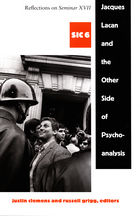 Jacques Lacan and the Other Side of Psychoanalysis: Reflections on Seminar XVII, sic vi
Justin Clemens and Russell Grigg, eds.
Duke University Press, 2006 This collection is the first extended interrogation in any language of Jacques Lacan's Seminar XVII. Originally delivered just after the Paris uprisings of May 1968, Seminar XVII marked a turning point in Lacan’s thought; it was both a step forward in the psychoanalytic debates and an important contribution to social and political issues. Collecting important analyses by many of the major Lacanian theorists and practitioners, this anthology is at once an introduction, critique, and extension of Lacan’s influential ideas. The contributors examine Lacan’s theory of the four discourses, his critique of the Oedipus complex and the superego, the role of primal affects in political life, and his prophetic grasp of twenty-first-century developments. They take up these issues in detail, illuminating the Lacanian concepts with in-depth discussions of shame and guilt, literature and intimacy, femininity, perversion, authority and revolt, and the discourse of marketing and political rhetoric. Topics of more specific psychoanalytic interest include the role of objet a, philosophy and psychoanalysis, the status of knowledge, and the relation between psychoanalytic practices and the modern university. Contributors. Geoff Boucher, Marie-Hélène Brousse, Justin Clemens, Mladen Dolar, Oliver Feltham, Russell Grigg, Pierre-Gilles Guéguen, Dominique Hecq, Dominiek Hoens, Éric Laurent, Juliet Flower MacCannell, Jacques-Alain Miller, Ellie Ragland, Matthew Sharpe, Paul Verhaeghe, Slavoj Žižek, Alenka Zupancic
Jacques Lacan and the Philosophy of Psychoanalysis
Ellie Ragland-Sullivan
University of Illinois Press, 1986 This volume is the first clear and comprehensive critical analysis of Jacques Lacan's thought for the English-speaking world. With Jacques Lacan and the philosophy of Psychoanalysis Ellie Ragland-Sullivan not only fills that gap but also provides the foundation upon which all future studies of Lacan must build. Working principally from the legendary but seldom-analyzed Seminars, Ragland-Sullivan clarifies and synthesizes Lacan's major concepts. Using empirical data as well as Lacan's texts, she demonstrates how Lacan's teachings constitute a new epistemology that goes far beyond conventional thinking in psychoanalysis, psychology, philosophy, and linguistics.
 Jacques Lacan: The French Context
Marini, Marcelle
Rutgers University Press, 1993 Although many books have been published on Jacques Lacan that attem0pt to explain his work and to provide insights into the relationship between his work and his life, most of them depend largely on the small number of texts that were published in his lifetime. Unlike Freud, however, Lacan expressed his ideas not through voluminous writings and carefully considered case studies, but through his lectures. He was a volatile figure on the French psychoanalytic scene; his feuds and friendships and ever-changing professional alliances go a long way toward explaining his views. JACQUERS LACAN, published to great acclaim in France in 1986, has now been translated into English. It is the first look at Lacan and his work from within the French context. Marcelle Marini, a knowledgeable insider, presents Lacan in two parts. The first part focuses on the actual situation of psychoanalysis in France, attempting to efine the impact of Lacan on it and its effect on him, his life, and work since 1926. Marini describes scandals and battles, as well as material on Lacan's original concepts and major theories. In the second half of the book Marini provides a full chronological, biographical, and bibliographical dossier - year by year - of the progress of Lacan's work. Lacan's lectures are given proper attention, extending our view far beyond the written texts. JACQUES LACAN is indispensable reading for anyone who truly wants to understand the man and his work.
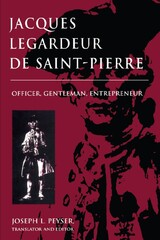 Jacques Legardeur De Saint-Pierre: Officer, Gentleman, Entrepeneur
Joseph L. Peyser
Michigan State University Press, 1996 The documentary biography of Jacques Legardeur de Saint-Pierre, an officer in the Troupes de la Marine, who served throughout New France, sheds new light on the business activity of French colonial officers stationed in the West. Many of the eighty previously untranslated documents in Jacques Legardeur de Saint-Pierre demonstrate the extent and profitability of Saint-Pierre's pursuit of business activities while performing official duties in eighteenth-century French North America. The quest for profit permeated Saint- Pierre's career, particularly his command of the Western Sea Post after he succeeded the fabled Pierre Gaultier de Varennes et de la Vérendrye. Saint-Pierre and his secret partner General Jacques-Pierre de Taffanel de La Jonquière, Intendant François Bigot, and Meret, secretary to La Jonquière, used their positions to engage in extensive trade, especially brandy, with the Cree and Assiniboine northwest of Lake Superior. Saint-Pierre's activities provide fresh insights into the North American fur trade.
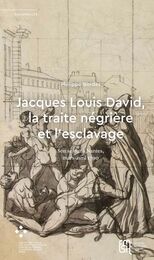 Jacques Louis David, la traite négrière et l’esclavage: Son séjour à Nantes, mars-avril 1790
Philippe Bordes
Diaphanes, 2023 De son voyage à Nantes au printemps 1790, Jacques Louis David rapporta une vaste composition allégorique, inspirée par l’esprit révolutionnaire qui avait très tôt pris racine dans la cité portuaire. Le présent essai en propose une analyse serrée soulignant que, lors de son séjour dans le premier port négrier de France, le peintre fut inévitablement confronté à la réalité du commerce des esclaves. En déchiffrant la polysémie iconographique de son dessin, Philippe Bordes y voit une métaphore de l’esclavage – ou plus exactement d’un esclavage Noir-Blanc, dans le double sens colonial et métropolitain – que David voulut y déployer. Il met en lien cette composition avec l’influence de son entourage parisien, qui comptait plusieurs membres de la Société des Amis des Noirs, et avec les vifs débats sur l’abolition de la traite négrière au sein de l’Assemblée nationale et en dehors. L’histoire renouvelée du séjour nantais de David se révèle alors comme le moment de l’entrée en Révolution de ce géant de la peinture en tant que citoyen et artiste.
Jacques Maritain: An Intellectual Profile
Jude P. Dougherty
Catholic University of America Press, 2003 In Jacques Maritain: An Intellectual Profile, Jude P. Dougherty shares his lifetime interest in and study of Maritain with readers. He offers the most complete introduction to Maritain yet to be published, highlighting Maritain's many contributions to philosophy.
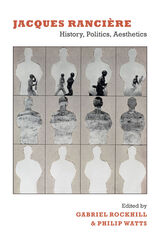 Jacques Rancière: History, Politics, Aesthetics
Gabriel Rockhill and Philip Watts, eds.
Duke University Press, 2009 The French philosopher Jacques Rancière has influenced disciplines from history and philosophy to political theory, literature, art history, and film studies. His research into nineteenth-century workers’ archives, reflections on political equality, critique of the traditional division between intellectual and manual labor, and analysis of the place of literature, film, and art in modern society have all constituted major contributions to contemporary thought. In this collection, leading scholars in the fields of philosophy, literary theory, and cultural criticism engage Rancière’s work, illuminating its originality, breadth, and rigor, as well as its place in current debates. They also explore the relationships between Rancière and the various authors and artists he has analyzed, ranging from Plato and Aristotle to Flaubert, Rossellini, Auerbach, Bourdieu, and Deleuze. The contributors to this collection do not simply elucidate Rancière’s project; they also critically respond to it from their own perspectives. They consider the theorist’s engagement with the writing of history, with institutional and narrative constructions of time, and with the ways that individuals and communities can disturb or reconfigure what he has called the “distribution of the sensible.” They examine his unique conception of politics as the disruption of the established distribution of bodies and roles in the social order, and they elucidate his novel account of the relationship between aesthetics and politics by exploring his astute analyses of literature and the visual arts. In the collection’s final essay, Rancière addresses some of the questions raised by the other contributors and returns to his early work to provide a retrospective account of the fundamental stakes of his project. Contributors. Alain Badiou, Étienne Balibar, Bruno Bosteels, Yves Citton, Tom Conley, Solange Guénoun, Peter Hallward, Todd May, Eric Méchoulan, Giuseppina Mecchia, Jean-Luc Nancy, Andrew Parker, Jacques Rancière, Gabriel Rockhill, Kristin Ross, James Swenson, Rajeshwari Vallury, Philip Watts
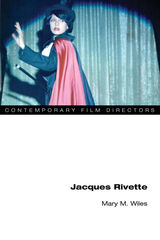 Jacques Rivette
Mary M. Wiles
University of Illinois Press, 2012 As a pioneer of the French New Wave, Jacques Rivette was one of a group of directors who permanently altered the world's perception of cinema by taking the camera out of the studios and into the streets. His films, including Paris nous appartient, Out 1: Noli me tangere, Céline et Julie vont en bateau--Phantom Ladies Over Paris, La belle noiseuse, Secret défense, and Va savoir are extraordinary combinations of intellectual depth, playfulness, and sensuous beauty. In this study of Rivette, Mary M. Wiles provides a thorough account of the director's career from the burgeoning French New Wave to the present day, focusing on the theatricality of Rivette's films and his explorations of the relationship between cinema and fine arts such as painting, literature, music, and dance. Wiles also explores the intellectual interests that shaped Rivette's approach to film, including Sartre's existentialism, Barthes's structuralism, and the radical theater of the 1960s. The volume concludes with Wiles's insightful interview with Rivette.
 Jacques Yver's Winter's Springtime: A Modern English Translation
Margaret Harp
Amsterdam University Press, 2025 A prose work interspersed with poetry, Le Printemps d'Yver was highly popular in its day, seeing thirty editions between 1572 and 1635. Jacques Yver’s stories and their premise – three gentlemen and two noble women who spin five tales in order to distract each other from the horrors of the recent third religious war and to rejoice in the brief 1570 truce of Saint-Germain - provide an intriguing and distinctive continuation of this genre evocative of Boccaccio and Marguerite de Navarre. It reveals an author with a profound humanist education whose text, inspired by Bandello, engages the social and political controversies of late sixteenth-century France. Henry Wotton translated Le Printemps into early modern English in 1578, removing all references to the original author and title while also mistranslating, deleting, and substituting passages. This modern English translation constitutes the first complete translation of the original French text.
JACR vol 3 num 1
The University of Chicago Press
University of Chicago Press Journals, 2018
JACR vol 3 num 2
The University of Chicago Press
University of Chicago Press Journals, 2018
JACR vol 3 num 3
The University of Chicago Press
University of Chicago Press Journals, 2018
JACR vol 3 num 4
The University of Chicago Press
University of Chicago Press Journals, 2018
JACR vol 4 num 1
The University of Chicago Press
University of Chicago Press Journals, 2019
JACR vol 4 num 2
The University of Chicago Press
University of Chicago Press Journals, 2019
JACR vol 4 num 3
The University of Chicago Press
University of Chicago Press Journals, 2019
JACR vol 4 num 4
The University of Chicago Press
University of Chicago Press Journals, 2019
JACR vol 5 num 1
The University of Chicago Press
University of Chicago Press Journals, 2020
JACR vol 5 num 2
The University of Chicago Press
University of Chicago Press Journals, 2020
JACR vol 5 num 3
The University of Chicago Press
University of Chicago Press Journals, 2020
JACR vol 5 num 4
The University of Chicago Press
University of Chicago Press Journals, 2020
JACR vol 6 num 1
The University of Chicago Press
University of Chicago Press Journals, 2021
Jacy: An Implemented Grammar of Japanese
Melanie Siegel, Emily M. Bender, and Francis Bond
CSLI, 2017 This book describes the fundamentals of Jacy, an implementation of a Japanese head-driven phrase structure grammar with many useful linguistic implications. Jacy presents sound information about the Japanese language (syntax, semantics, and pragmatics) based on implementation and tested on large quantities of data. As the grammar development was done in a multilingual environment, Jacy also showcases both multilingual concepts and differences among the languages and demonstrates the usefulness of semantic analysis in language technology applications.
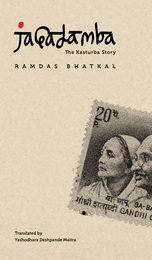 Jagadamba: The Kasturba Story
Ramdas Bhatkal
Seagull Books, 2016 While Mahatma Gandhi is hailed across the world as a champion of humanity and nonviolent struggle, the struggles of the woman who accompanied him closely all his life, his wife Kasturba Gandhi, remain untold. This playtext, Jagadamba, rights that wrong with a long monologue in which Kasturba speaks from her heart about the different facets of her life—an often difficult marriage, the great man’s selfless immersion in politics and its consequences for their family, their troubled sons, and, most importantly, her own desires and hopes.
Originally conceived in the Marathi language for actress Rohini Hattangadi, who received an Academy Award nomination for her portrayal of Kasturba in Richard Attenborough’s classic biopic Gandhi, this play charts the journey of a simple girl who went on to become “Jagadamba,” or the “Universal Mother,” as the wife of the Mahatma.
As Shanta Ghokale writes in her introduction: “Wives of great men have hard lives, often lived in negation of values they hold most dear. Jagadamba is the personal feelings of a devoted wife who had held her own in a life made mentally, physically, and morally turbulent by her husband’s ideas and political work.”
Jagged with Love
Susanna Childress
University of Wisconsin Press, 2005 Susanna Childress writes with an earnest desire to understand things physical and things spiritual. What results is a first collection of provocative, honest poetry that explores various human predicaments: a cancer-ridden wife, an explosive father, an infertile couple, various sexual aggressors, a missing girl. Such careful portraiture provokes the reader to consider the complexity of human love: how selfishness, fear, lust and even brutality might coincide with tenderness and loyalty. Ms. Childress's writing is refreshingly naive and clear, her voice essentially inquisitive. She is brave enough to look at the darkness of the world, but she is more courageous to hope.
 Jaguar: A Story of Africans in America
Paul Stoller
University of Chicago Press, 1999 Issa Boureima is a young, hip African street vendor who sells knock-off designer bags and hats in an open-air market on 125th street in Harlem. His goal is to become a "Jaguar"—a West African term for a keen entrepreneur able to spot trends and turn a profit in any marketplace. This dynamic world, largely invisible to mainstream culture, is the backdrop of this timely novel.
Faced with economic hardship in Africa, Issa has left his home in Niger and his new wife, Khadija, to seek his fortune in America. Devout Muslims, the couple has entered into a "modern" marriage: Khadija is permitted to run her own business, and Issa has agreed not to take additional wives. Issa quickly adapts to his new surroundings, however, and soon attracts several girlfriends. Aided by a network of immigrants, he easily slips through gaps in the "system" and extends his stay in America indefinitely. Following a circuit of African-American cultural festivals across America, he marvels at African-Americans' attitudes toward Africa, and wonders if he'll ever return to Niger. Meanwhile, Khadija also struggles to make it—to become a "Jaguar"—as she combats loneliness, hostile in-laws, and a traditional, male-dominated society. The eventual success of her dry goods shop and her growing affection for a helpful Arab merchant make her wonder if she'll ever join Issa in America.
Drawing on his own decades of experience among Africans both in Niger and in New York, Paul Stoller offers enormous insight into the complexities of contemporary Africa. Alive with detail, Jaguar is a story of triumph and disappointment, of dislocation and longing, and of life lived in a world that no longer recognizes boundaries.
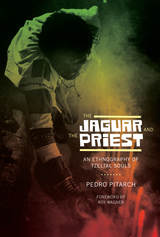 The Jaguar and the Priest: An Ethnography of Tzeltal Souls
By Pedro Pitarch
University of Texas Press, 2010 In contrast to western notions of the soul as the essence or most native part of a human being, the Tzeltal-speaking Indians of Chiapas, Mexico, regard the soul first and foremost as an Other. Made up of beings that personify the antithesis of their native selves—animals such as hummingbirds or jaguars, atmospheric phenomena like lightning bolts or rainbows, or spirits of European appearance such as Catholic priests or evangelical musicians—Tzeltal souls represent the maximum expression of that which is alien. And because their souls enfold that which is outside and Other, the Tzeltal contain within themselves the history of their relationship with Europeans from the beginning of the Spanish conquest to the present time. Thus, to understand the Indian self opens a window into the Tzeltal conception of culture and community, their notions of identity and alterity, and their interpretation of interethnic relations and types of historical memory. In this pathfinding ethnography, which was originally published in Spanish in 1996 as Ch'ulel: una etnografía de las almas tzeltales and is now extensively rewritten and amplified in English, Pedro Pitarch offers a new understanding of indigenous concepts of the soul, personhood, and historical memory in highland Chiapas. Exploring numerous aspects of indigenous culture and history—medicine and shamanism, geography and cosmology, and politics and kinship among them—he engages in a radical rethinking of classic issues in Mesoamerican anthropology, such as ethnicity and alterity, community and tradition, and change and permanence.
Jaguar: One Man's Struggle To Establish The World's First Jaguar Preserve
Alan Rabinowitz
Island Press, 2000 In 1983, zoologist Alan Rabinowitz ventured into the rain forest of Belize, determined to study the little-known jaguar in its natural habitat and to establish the world's first jaguar preserve. Within two years, he had succeeded. In Jaguar he provides the only first-hand account of a scientist's experience with jaguars in the wild. Originally published in 1986, this edition includes a new preface and epilogue by the author that bring the story up to date with recent events in the region and around the world.
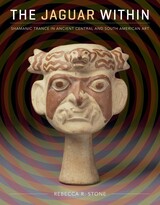 The Jaguar Within: Shamanic Trance in Ancient Central and South American Art
By Rebecca R. Stone
University of Texas Press, 2011 An important new way of viewing the prehistoric art of the Americas, The Jaguar Within demonstrates that understanding a work of art’s connection with shamanic trance can lead to an appreciation of it as an extremely creative solution to the inherent challenge of giving material form to nonmaterial realities and states of being. Shamanism—the practice of entering a trance state to experience visions of a reality beyond the ordinary and to gain esoteric knowledge—has been an important part of life for indigenous societies throughout the Americas from prehistoric times until the present. Much has been written about shamanism in both scholarly and popular literature, but few authors have linked it to another significant visual realm—art. In this pioneering study, Rebecca R. Stone considers how deep familiarity with, and profound respect for, the extra-ordinary visionary experiences of shamanism profoundly affected the artistic output of indigenous cultures in Central and South America before the European invasions of the sixteenth century. Using ethnographic accounts of shamanic trance experiences, Stone defines a core set of trance vision characteristics, including enhanced senses; ego dissolution; bodily distortions; flying, spinning, and undulating sensations; synaesthesia; and physical transformation from the human self into animal and other states of being. Stone then traces these visionary characteristics in ancient artworks from Costa Rica and Peru. She makes a convincing case that these works, especially those of the Moche, depict shamans in a trance state or else convey the perceptual experience of visions by creating deliberately chaotic and distorted conglomerations of partial, inverted, and incoherent images.
 Jaguars' Tomb
Angélica Gorodischer
Vanderbilt University Press, 2021 Winner of the Queen Sofía Spanish Institute Translation Prize, 2022
Jaguars' Tomb is a novel in three parts, written by three interconnected characters. Part one, "Hidden Variables" by María Celina Igarzábal, is narrated by Bruno Seguer. Seguer in turn is the author of the second part, "Recounting from Zero" ("Contar desde zero"), in which Evelynne Harrington, author of the third, is a central character. Harrington, finally, is the author of "Uncertainty" ("La incertidumbre"), whose protagonist is the dying Igarzábal. Each of the three parts revolves around the octagonal room that is alternately the jaguars' tomb, the central space of the torture center, and the heart of an abandoned house that hides an adulterous affair.
The novel, by Argentine author Angélica Gorodischer, is both an intriguing puzzle and a meditation on how to write about, or through, violence, injustice, and loss. Among Gorodischer's many novels, Jaguars' Tomb most directly addresses the abductions and disappearances that occurred under the Argentine military dictatorship of 1976–83. This is the fourth of Gorodischer's books translated into English. The first, Kalpa Imperial—translated by Ursula Le Guin—was selected for the New York Times summer reading list in 2003.
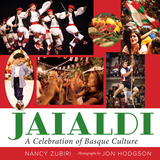 Jaialdi: A Celebration of Basque Culture
Nancy Zubiri
University of Nevada Press, 2022 First held in 1987, Jaialdi is the United States’s largest Basque festival and takes place in Boise every five years. Through vivid photography and a recounting of personal interviews with event founders and organizers, Jaialdi: A Celebration of Basque Culture provides a stunning account of how the ancient traditions of these industrious people are showcased through the activities and events of Jaialdi.
Organized and staffed entirely by volunteers, Jaialdi attracts 35,000 to 50,000 visitors from around the world. Attendees enjoy festivities featuring Basque culture, including dancing, music, food, and competitive feats of strength. Photographer Jon C. Hodgson captures the spirit and merriment of the festival in vivid detail, taking readers on a journey into the heart of Basque culture. Coupled with author Nancy Zubiri’s observations from her own attendance at nearly every Jaialdi since 1987, the book reveals how Boise’s Basque community has committed to host the festival and why the celebration remains so popular today.
The Basque diaspora to the United States began in the late 1800s when these determined immigrants came seeking a new life filled with opportunities. Many were sheepherders who adapted to American life while maintaining their ties to the traditions of the Basque Country. Jaialdi: A Celebration of Basque Culture illuminates how this festival honors these traditions and captures the essence of the ancient Basque people, who are preserving their heritage while embracing life in the twenty-first-century West.
Jail Speak
Ben Langston
Ohio University Press, 2020 “Call me what you want—corrections officer, C.O., guard, jailcop, turnkey—I helped keep people there against their will. For this, the jail rewarded me with food.” When Ben Langston took a job at the State Correctional Institute at Rockview, it was because there were few other options. At his previous job—putting labels on water bottles—he did not have cups of human waste thrown in his face. He did not have to finger sweaty armpits in search of weapons. There were no threats against his life. But the jail paid better. Jail Speak is a memoir written from a guard’s perspective. It’s about the grind, about dehumanization, drama, punishment, and the cycles of harm perpetrated by the prison industry. It’s about masculinity and conformity and emotional detachment. It’s a look at the inside that you didn’t want to know about, and it’s for mature audiences only. Know your limits.
 Jain Tales of Moksha
Shivakotyacharya
Harvard University Press A tenth-century Jain guide to ethics, self-discipline, and the quest for meaning at life’s end.
Vaḍḍārādhane (literally, the veneration of ritual death), the first extant prose work in Kannada, is a tenth-century collection of Jain stories about nineteen warrior saints who embrace death in pursuit of moksha, or spiritual liberation. Each tale in this book of living and dying follows the renunciate’s transformation from an ordinary person enmeshed in worldly desires to an enlightened being who attains moksha through penance, fasting, meditation, and self-mortification, culminating in ritual death. Originally recited for spiritual protection to Jain renunciates approaching the end of life, these narratives explore social hierarchy, duty, and discipline while offering enduring insights into human striving and ethical courage.
Attributed to Shivakotyacharya, a Digambara Jain cleric, the collection combines the vernacular stories with verses in Prakrit and Sanskrit. Presented here in a modern English translation alongside the authoritative Kannada text, Jain Tales of Moksha speaks across centuries. Its medieval themes of moral choice, self-discipline, and the search for ultimate freedom invite contemporary readers to reflect on how we navigate desire, duty, and the quest for meaning in our own lives.
 Jainism and Ecology: Nonviolence in the Web of Life
Christopher Key Chapple
Harvard University Press, 2002 The twenty-five-hundred-year-old tradition of Jainism, which emphasizes nonviolence as the only true path leading to liberation, offers a worldview seemingly compatible with the goals of environmental activism.
But can Jainism adopt a sociocentric environmentalism without compromising its own ascetic principles and spiritual tradition? How does traditional Jain cosmology view the natural world? How might a Jain ethical system respond to decisions regarding the development of dams, the proliferation of automobiles, overcrowding due to overpopulation, or the protection of individual animal species? Can there be a Jain environmental activism that addresses both the traditional concern for individual self-purification and the contemporary dilemma of ecosystem degradation? The voices in this volume reflect the dynamic nature of the Jain faith and its willingness to engage in discussion on a modern social issue.
Jairus’s Daughter and the Female Body in Mark
Janine E. Luttick
SBL Press, 2023 Jairus’s Daughter and the Female Body in Mark demonstrates that ubiquitous and significant depictions of children in the literature and material culture of the first century CE shaped the mindsets of the Gospel of Mark’s original audience. Through a detailed analysis of the story of Jairus’s daughter in Mark 5 and of the archaeological remains depicting female children, Janine E. Luttick reveals how ancient hearers of this story encountered an image of a female child that communicated ideas of hope to Jesus’s followers and in turn how readers today can understand the authority of Jesus, the domestic structures of early Christianity, and the suffering and loss experienced by some early Christians.
Jakarta: City of a Thousand Dimensions
Abidin Kusno
National University of Singapore Press, 2023 A study of the forces that shaped Jakarta into the city it is today.
Indonesian writer Seno Gumira Ajidarma has called Jakarta a city of a thousand dimensions. A megacity of 30 million under threat from rising sea levels and temperatures, Jakarta and its resilient residents improvise and thrive. This book teases out some of the dimensions that have given shape to contemporary Jakarta, including the city’s expanded flexibility in accommodating capital and labor, and the consistent lack of planning that can be understood as a result of both politics and the poetics of governing in the region. Jakarta is essential reading for those seeking to understand one of Asia's most dynamic cities.
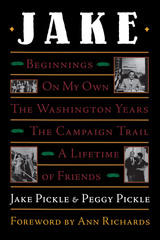 Jake
By Jake Pickle and Peggy Pickle
University of Texas Press, 1997 "My life has been given special purpose," Jake Pickle says. "Some men live to make money, drink, chase women, collect art, excel at a sport, or pursue other things that give them pleasure. The thing I got hooked on was helping people. And I've had the privilege of helping people by the thousands. Serving in Congress was the greatest honor of my life." In this book, Jake Pickle tells the story of a lifetime in public service, including thirty-one years as Representative for Texas' Tenth Congressional District. Jake tells his story by telling stories—most of them humorous, some poignant—that add up to a warmly personal account of his life and career. At the heart of the book are Jake's stories of political life in Washington, Austin, and on the campaign trail. These range from hilarious accounts of all that can and does happen at small-town Texas parades and rallies to clear, no-baloney explanations of some of the major legislation that Jake helped to pass. His stories about Social Security reform, tax-exempt organizations, and pension fund reform legislation make these complex topics easy to understand. This book was written as a collaboration between Jake and his daughter, Peggy Pickle. It offers the fun of listening to a born raconteur spin his tales, while it reveals the ethics and integrity of a man who never forgot that the people elected him to serve them.
 Jakobsonian Poetics and Slavic Narrative: From Pushkin to Solzhenitsyn
Krystyna Pomorska
Duke University Press, 1992 Krystyna Pomorska (1928–1986), a noted specialist of Slavic literature and literary theory, is best known for her pioneering work in applying Roman Jakobson's theories of poetics to prose narratives. This collection draws together and makes accessible her writings over two decades (among them articles appearing in English for the first time), and treats a wide range of Slavic literary works, including Pushkin, Tolstoy, Pasternak, Chekov, and Solzhenitsyn, as well as examples from Polish and Ukrainian literature and folklore.
Forming an intellectual and methodological whole, these essays reveal Pomorska's commitment to the principles of Jakobsonian poetics, her consistent application of these basic theoretical concepts to the analysis of literary works, and her interest in the foundations and history of literary criticism. Pomorska explores problems in both poetics (of prose as well as poetry) and literary theory, especially the relationship between biography and myth.
In Krystyna Pomorska, structuralism found a most able practitioner, and Jakobson's oeuvre an authoritative exponent and interpreter. Her volume, a guidebook to a major strain in modern criticism, will be of great interest to a broad audience of literary theorists and students of Slavic literatures and literature in general.
 Jallad: Death Squads and State Terror in South Asia
Tasneem Khalil
Pluto Press, 2015 Throughout South Asia, people live in fear of death squads, from the Rapid Action Battalion of Bangladesh to the “encounter specialists” of India, army units in Nepal, the Frontier Corps of Pakistan, and the “men in white vans” of Sri Lanka. Their tools are disappearance, torture, and summary execution, and their supporters, Tasneem Khalil shows in Jallad, are the governments of these nations—and their patrons, like the United States, the United Kingdom, China, and Israel.
An unsparing indictment of an international system of terror that is fully countenanced by the West, Jallad presents close-up, detailed accounts of incidents of state terror and targeted violence throughout South Asia. Khalil, a reporter who himself endured torture at the hands of agents in Bangladesh, and whose remarkable story was featured in the New York Times, draws on countless hours of on-the-ground reporting and a broad network of activists and human rights advocates to build an undeniable portrait of the domination and repression that lies at the very core of statecraft in South Asia. Shielded by their protectors in the developed world, the perpetrators of these abuses deploy them strategically to silence dissent and crush opposition.
A brave, essential work of reporting and investigation, Jallad brings these horrific acts to prominence in order to make it impossible for Western governments to continue turning a blind eye to the human rights violations of their erstwhile allies.
 Jalousie
Allyson Paty
Tupelo Press, 2025 Winner of the 2023 Berkshire Prize for a First or Second Book of Poetry, Jalousie works toward a poetics of analysis.
The “I-centered,” first person, yet experimental poems in Jalousie explore the ways in which expression of the deeply personal experience is both dictated to and altered by rigid societal expectations. The speaker of these highly personal poems can’t help but view language as a historical artifact, the DNA of past worlds, as these poems delve into the complexities of sorting out one’s individual identity amid broader cultural contexts. Paty’s poems attempt to connect the personal, private, intimate persona with elements that are always external—external not only to this poet but to every person.
These poems seek to capture fleeting moments of personal connection despite the impossibility of language, the societal dictates of gender roles, the pressures of making a living, the inexorable march of time, and the bewildering strangeness of architectural spaces. At the heart of this collection is “Premise,” an extensive poem that weaves in detours through the history of New York City, themes of discard, references to Bruegel's “Wedding Dance,” and discussions on representation and memory. The book also contains three full-color illustrations which augment the poet’s themes and concerns.
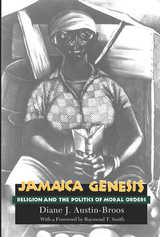 Jamaica Genesis: Religion and the Politics of Moral Orders
Diane J. Austin-Broos
University of Chicago Press, 1997 How has Pentecostalism, a decidedly American form of Christian revivalism, managed to achieve such phenomenal religious ascendancy in a former British colony among people of predominately African descent? According to Diane J. Austin-Broos, Pentecostalism has flourished because it successfully mediates between two historically central yet often oppositional themes in Jamaican religious life—the characteristically African striving for personal freedom and happiness, and the Protestant struggle for atonement and salvation through rigorous ethical piety. With its emphasis on the individual experience of grace and on the ritual efficacy of spiritual healing, and with its vibrantly expressive worship, Jamaican Pentecostalism has become a powerful and compelling vehicle for the negotiation of such fundamental issues as gender, sexuality, race, and class. Jamaica Genesis is a work of signal importance to all those concerned not simply with Caribbean studies but with the ongoing transformation of religion andculture.
Jamaica in 1850: or, The Effects of Sixteen Years of Freedom on a Slave Colony
John Bigelow Introduction by Robert J. Scholnick
University of Illinois Press, 2000 A reporter's firsthand portrait of formerly enslaved Jamaicans in the years after emancipation John Bigelow’s Jamaica in 1850 provided an important document in the antislavery movement in the United States and Great Britain. Jamaica’s economy had collapsed after the 1838 emancipation. American supporters of enslavement used the Jamaican example to argue that abolition at home would unleash economic and social chaos. Bigelow’s vivid eyewitness reporting undermined that widely held view by proving Jamaica’s problems originated in the incompetence of absentee white planters and an obsolete colonial system. As Bigelow showed, many once-enslaved Jamaicans had in fact become successful small-scale landowners in the twelve years after emancipation while the large plantations languished.
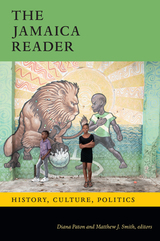 The Jamaica Reader: History, Culture, Politics
Diana Paton and Matthew J. Smith, editors
Duke University Press, 2021 From Miss Lou to Bob Marley and Usain Bolt to Kamala Harris, Jamaica has had an outsized reach in global mainstream culture. Yet many of its most important historical, cultural, and political events and aspects are largely unknown beyond the island. The Jamaica Reader presents a panoramic history of the country, from its precontact indigenous origins to the present. Combining more than one hundred classic and lesser-known texts that include journalism, lyrics, memoir, and poetry, the Reader showcases myriad voices from over the centuries: the earliest published black writer in the English-speaking world; contemporary dancehall artists; Marcus Garvey; and anonymous migrant workers. It illuminates the complexities of Jamaica's past, addressing topics such as resistance to slavery, the modern tourist industry, the realities of urban life, and the struggle to find a national identity following independence in 1962. Throughout, it sketches how its residents and visitors have experienced and shaped its place in the world. Providing an unparalleled look at Jamaica's history, culture, and politics, this volume is an ideal companion for anyone interested in learning about this magnetic and dynamic nation.
 Jamaica's Difficult Subjects: Negotiating Sovereignty in Anglophone Caribbean Literature and Criticism
Sheri-Marie Harrison
Ohio State University Press, 2014 Recognizing that in the contemporary postcolonial moment, national identity and cultural nationalism are no longer the primary modes of imagining sovereignty, Sheri-Marie Harrison argues that postcolonial critics must move beyond an identity-based orthodoxy as they examine problems of sovereignty. In Jamaica’s Difficult Subjects: Negotiating Sovereignty in Anglophone Caribbean Literature and Criticism, Harrison describes what she calls “difficult subjects”—subjects that disrupt essentialized notions of identity as equivalent to sovereignty. She argues that these subjects function as a call for postcolonial critics to broaden their critical horizons beyond the usual questions of national identity and exclusion/inclusion.
Harrison turns to Jamaican novels, creative nonfiction, and films from the 1960s to the present and demonstrates how they complicate standard notions of the relationship between national identity and sovereignty. She constructs a lineage between the difficult subjects in classic Caribbean texts like Wide Sargasso Sea by Jean Rhys and The Harder they Come by Perry Henzell and contemporary writing by Marlon James and Patricia Powell. What results is a sweeping new history of Caribbean literature and criticism that reconfigures how we understand both past and present writing. Jamaica’s Difficult Subjects rethinks how sovereignty is imagined, organized, and policed in the postcolonial Caribbean, opening new possibilities for reading multiple generations of Caribbean writing.
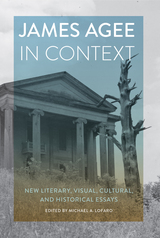 James Agee in Context: New Literary, Visual, Cultural, and Historical Essays
Michael A. Lofaro
University of Tennessee Press, 2022 It’s difficult to overestimate the impact of the many new works by James Agee uncovered and published in the last twenty years. These previously unknown primary works have, in turn, encouraged a parallel explosion of critical evaluation and reevaluation by scholars, to which James Agee in Context is the latest contribution.
This superb collection from well-known James Agee scholars features myriad approaches and contexts for understanding the author’s fiction, poetry, journalism, and screenwriting. The essays bring the reader from the streets of James Agee’s New York to travel with the author from Alabama to Hollywood to Havana. Contributors explore overlapping and sometimes unique subjects, themes, and accomplishments (or lack thereof) in Agee’s uncovered works and highlight the diversity of interest that Agee’s complete body of work inspires. The insightful scholarship on influence examines connections between Agee and Wright Morris, Helen Levitt, John Dos Passos, Ernest Hemingway, and Stephen Crane. Such juxtapositions serve to illustrate how Agee drew on literary influences as a young man, how he used his work as a journalist to craft fiction as he was about to turn thirty, and his influence upon others. The volume concludes with three poems and a short story by Agee, all previously unknown.
It seems astonishing that so much remains to be discovered about this protean author, his materials, and his circle. Yet, the recovery and analysis of neglected texts and information mined from newspapers and magazines proves the extent to which Agee kept his mind and his work, as he himself put it, “patiently concentrated upon the essential quietudes of the human soul.”
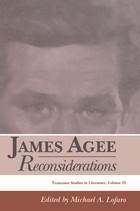 James Agee: Reconsiderations
Michael A. Lofaro
University of Tennessee Press, 1995 The essayists in this volume argue that far more recognition is due to James Agee than is usually granted. Although the significance of his accomplishments is often overshadowed by his short, turbulent, life, any reevaluation of his work must still begin with the man himself. Agee's complex and driven life seems to crystallize the debate over the relationship between art and reality in the modern age.
Continually exploring new fields, Agee achieved success as a poet, journalist, and essayist, as well as a writer of screenplays and fiction. Agee's sense of place, ingrained in him during his boyhood in Knoxville, Tennessee, provided the ground upon which he tested the temper of his creative process and his beliefs and attempted to reconcile the Romantic and Modern viewpoints into what he termed a "whole of consciousness."
But the price of attempting transcendence was high. At times Agee ravaged his own life in a quest to dissolve the barrier between reality and art; at other times, his gusto and vitality were converted into unique and innovative works like the audacious and uncategorizable Let Us Now Praise Famous Men and the highly charged autobiographical novel A Death in the Family. The essays in this volume, drawn in part from the 1989 "Agee Legacy" symposium, focus upon these two major works and upon Agee's explorations of narrative technique. The authors demonstrate that the measure of Agee's success is in large part the direct result of his supposed flaws: his variety of subject and form, and his life of often reckless abandon.
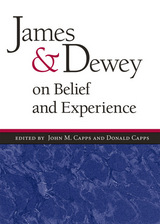 James and Dewey on Belief and Experience
Edited by John M. Capps and Donald Capps
University of Illinois Press, 2010 Donald Capps and John Capps's James and Dewey on Belief and Experience juxtaposes the key writings of two philosophical superstars. As fathers of Pragmatism, America's unique contribution to world philosophy, their work has been enormously influential, and remains essential to any understanding of American intellectual history.
In these essays, you'll find William James deeply embroiled in debates between religion and science. Combining philosophical charity with logical clarity, he defended the validity of religious experience against crass forms of scientism. Dewey identified the myriad ways in which supernatural concerns distract religious adherents from pressing social concerns, and sought to reconcile the tensions inherent in science's dual embrace of common sense and the aesthetic.
James and Dewey on Belief and Experience is divided into two sections: the former showcases James, the latter is devoted to Dewey. Two transitional passages in which each reflects on the work of the other bridge these two main segments. Together, the sections offer a unique perspective on the philosophers' complex relationship of influence and interdependence. An editors' introduction provides biographical information about both men, an overview of their respective philosophical orientations, a discussion of the editorial process, and a brief commentary on each of the selections.
Comparing what these foremost pragmatists wrote on both themes illumines their common convictions regarding the nature of philosophical inquiry and simultaneously reveals what made each a distinctive thinker.
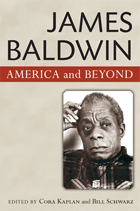 James Baldwin: America and Beyond
Bill Schwarz and Cora Kaplan, editors
University of Michigan Press, 2011 "This fine collection of essays represents an important contribution to the rediscovery of Baldwin's stature as essayist, novelist, black prophetic political voice, and witness to the Civil Rights era. The title provides an excellent thematic focus. He understood both the necessity, and the impossibility, of being a black 'American' writer. He took these issues 'Beyond'---Paris, Istanbul, various parts of Africa---but this formative experience only returned him to the unresolved dilemmas. He was a fine novelist and a major prophetic political voice. He produced some of the most important essays of the twentieth century and addressed in depth the complexities of the black political movement. His relative invisibility almost lost us one of the most significant voices of his generation. This welcome 'revival' retrieves it. Close call."
---Stuart Hall, Professor Emeritus, Open University
This interdisciplinary collection by leading writers in their fields brings together a discussion of the many facets of James Baldwin, both as a writer and as the prophetic conscience of a nation. The core of the volume addresses the shifting, complex relations between Baldwin as an American—“as American as any Texas GI” as he once wryly put it—and his life as an itinerant cosmopolitan. His ambivalent imaginings of America were always mediated by his conception of a world “beyond” America: a world he knew both from his travels and from his voracious reading. He was a man whose instincts were, at every turn, nurtured by America; but who at the same time developed a ferocious critique of American exceptionalism. In seeking to understand how, as an American, he could learn to live with difference—breaking the power of fundamentalisms of all stripes—he opened an urgent, timely debate that is still ours. His America was an idea fired by desire and grief in equal measure. As the authors assembled here argue, to read him now allows us to imagine new possibilities for the future. With contributions by Kevin Birmingham, Douglas Field, Kevin Gaines, Briallen Hopper, Quentin Miller, Vaughn Rasberry, Robert Reid-Pharr, George Shulman, Hortense Spillers, Colm Tóibín, Eleanor W. Traylor, Cheryl A. Wall, and Magdalena Zaborowska.
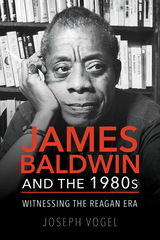 James Baldwin and the 1980s: Witnessing the Reagan Era
Joseph Vogel
University of Illinois Press, 2018 By the 1980s, critics and the public alike considered James Baldwin irrelevant. Yet Baldwin remained an important, prolific writer until his death in 1987. Indeed, his work throughout the decade pushed him into new areas, in particular an expanded interest in the social and psychological consequences of popular culture and mass media. Joseph Vogel offers the first in-depth look at Baldwin's dynamic final decade of work. Delving into the writer's creative endeavors, crucial essays and articles, and the impassioned polemic The Evidence of Things Not Seen, Vogel finds Baldwin as prescient and fearless as ever. Baldwin's sustained grappling with "the great transforming energy" of mass culture revealed his gifts for media and cultural criticism. It also brought him into the fray on issues ranging from the Reagan-era culture wars to the New South, from the deterioration of inner cities to the disproportionate incarceration of black youth, and from pop culture gender-bending to the evolving women's and gay rights movements. Astute and compelling, James Baldwin and the 1980s revives and redeems the final act of a great American writer.
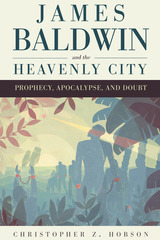 James Baldwin and the Heavenly City: Prophecy, Apocalypse, and Doubt
Christopher Z. Hobson
Michigan State University Press, 2018 Behind James Baldwin’s uncanny ability to evoke a nation’s crisis and potential hope lies his use of religious language to describe social and sexual transformation. The first study of its kind, James Baldwin and the Heavenly City shows that Baldwin’s novels use biblical ideas in partly but not fully secularized ways to express the possible human attainment of a new life embodying a real but undefinable holiness. Focusing on Baldwin’s six novels, along with essays, stories, and drama, the book first shows Baldwin’s method of recasting biblical and African American prophetic traditions to reveal their liberating core. It then examines several key themes: the prophet’s selection, seen in Baldwin’s debut novel, Go Tell It on the Mountain; the three linked ideas of prophetic art, the “apocalyptic body,” and the “apocalyptic city,” as presented in all his novels; and the polarity between prophecy and doubt, the subject of his last novel, Just Above My Head. This important work provides new readings of Baldwin’s novels, reassesses his once-neglected later fiction, and shows Gospel music’s centrality (with blues) in his fictional imagination.
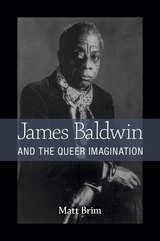 James Baldwin and the Queer Imagination
Matt Brim
University of Michigan Press, 2014 The central figure in black gay literary history, James Baldwin has become a familiar touchstone for queer scholarship in the academy. Matt Brim’s James Baldwin and the Queer Imagination draws on the contributions of queer theory and black queer studies to critically engage with and complicate the project of queering Baldwin and his work. Brim argues that Baldwin animates and, in contrast, disrupts both the black gay literary tradition and the queer theoretical enterprise that have claimed him. More paradoxically, even as Baldwin’s fiction brilliantly succeeds in imagining queer intersections of race and sexuality, it simultaneously exhibits striking queer failures, whether exploiting gay love or erasing black lesbian desire. Brim thus argues that Baldwin’s work is deeply marked by ruptures of the “unqueer” into transcendent queer thought—and that readers must sustain rather than override this paradoxical dynamic within acts of queer imagination.
 James Baldwin and the Queer Imagination
Matt Brim
University of Michigan Press, 2014 The central figure in black gay literary history, James Baldwin has become a familiar touchstone for queer scholarship in the academy. Matt Brim’s James Baldwin and the Queer Imagination draws on the contributions of queer theory and black queer studies to critically engage with and complicate the project of queering Baldwin and his work. Brim argues that Baldwin animates and, in contrast, disrupts both the black gay literary tradition and the queer theoretical enterprise that have claimed him. More paradoxically, even as Baldwin’s fiction brilliantly succeeds in imagining queer intersections of race and sexuality, it simultaneously exhibits striking queer failures, whether exploiting gay love or erasing black lesbian desire. Brim thus argues that Baldwin’s work is deeply marked by ruptures of the “unqueer” into transcendent queer thought—and that readers must sustain rather than override this paradoxical dynamic within acts of queer imagination.
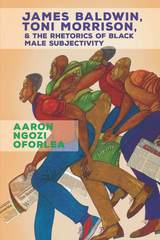 James Baldwin, Toni Morrison, and the Rhetorics of Black Male Subjectivity
Aaron Ngozi Oforlea
Ohio State University Press, 2017 In James Baldwin, Toni Morrison, and the Rhetorics of Black Male Subjectivity, Aaron Ngozi Oforlea explores the rhetorical strategies that Baldwin’s and Morrison’s black male characters employ as they negotiate discourses of race, class, gender, and sexuality. According to Oforlea, these characters navigate a discursive divide that separates limiting representations of black males in dominant discourses from a decolonized and empowered subjectivity. Specifically, the discursive divide creates an invisible boundary between how black subjects are seen, imagined, and experienced in dominant culture on the one hand, and how they understand themselves on the other.
Oforlea’s book offers new analyses of the character dynamics in Baldwin’s Go Tell It on the Mountain, Tell Me How Long the Train’s Been Gone, and If Beale Street Could Talkand Morrison’s Beloved, Song of Solomon, and Tar Baby. The black male characters in these novels encounter the discursive divide, or a cultural dissonance, when they encounter dominant representations of black male identities. They use these opportunities to construct a counter-discourse about black male subjectivity. Ultimately, Oforlea argues, these characters are strategic about when and how they want to appropriate and subvert dominant ideologies. Their awareness that post-racial discourses perpetuate racial inequality serves as a gateway toward participation in collective struggles for racial justice.
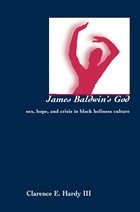 James Baldwin's God: Sex, Hope, and Crisis in Black Holiness Culture
Clarence E. Hardy
University of Tennessee Press, 2009 James Baldwin’s relationship with black Christianity, and especially his rejection of it, exposes the anatomy of a religious heritage that has not been wrestled with sufficiently in black theological and religious studies. In James Baldwin’s God: Sex, Hope, and Crisis in Black Holiness Culture, Clarence hardy demonstrates that Baldwin is important not only for the ways he is connected to black religious culture, but also for the ways he chooses to disconnect himself from it. Despite Baldwin’s view that black religious expression harbors a sensibility that is often vengeful and that its actual content is composed of illusory promises and empty theatrics, he remains captive to its energies, rhythms, languages, and themes. Baldwin is forced, on occasion, to acknowledge that the religious fervor he saw as an adolescent was not simply an expression of repressed sexual tension but also a sign of the irrepressible vigor and dignified humanity of black life. Hardy’s reading of Baldwin’s texts, with its goal of understanding Baldwin’s attitude toward a religion that revolves around an uncaring God in the face of black suffering, provides provocative reading for scholars of religion, literature, and history.
The Author: Clarence Hardy is an assistant professor of religion at Dartmouth College. His articles have appeared in the Journal of Religion and Christianity and Crisis.
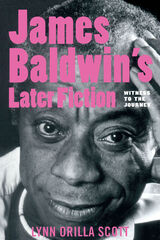 James Baldwin's Later Fiction: Witness to the Journey
Lynn O. Scott
Michigan State University Press, 2002 James Baldwin’s Later Fiction examines the decline of Baldwin’s reputation after the middle 1960s, his tepid reception in mainstream and academic venues, and the ways in which critics have often mis-represented and undervalued his work. Scott develops readings of Tell Me How Long the Train’s Been Gone, If Beale Street Could Talk, and Just Above My Head that explore the interconnected themes in Baldwin’s work: the role of the family in sustaining the arts, the price of success in American society, and the struggle of black artists to change the ways that race, sex, and masculinity are represented in American culture.
Scott argues that Baldwin’s later writing crosses the cultural divide between the 1950s and 1960s in response to the civil rights and black power movements. Baldwin’s earlier works, his political activism and sexual politics, and traditions of African American autobiography and fiction all play prominent roles in Scott’s analysis.
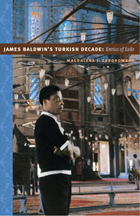 James Baldwin's Turkish Decade: Erotics of Exile
Magdalena J. Zaborowska
Duke University Press, 2008 Between 1961 and 1971 James Baldwin spent extended periods of time in Turkey, where he worked on some of his most important books. In this first in-depth exploration of Baldwin’s “Turkish decade,” Magdalena J. Zaborowska reveals the significant role that Turkish locales, cultures, and friends played in Baldwin’s life and thought. Turkey was a nurturing space for the author, who by 1961 had spent nearly ten years in France and Western Europe and failed to reestablish permanent residency in the United States. Zaborowska demonstrates how Baldwin’s Turkish sojourns enabled him to re-imagine himself as a black queer writer and to revise his views of American identity and U.S. race relations as the 1960s drew to a close. Following Baldwin’s footsteps through Istanbul, Ankara, and Bodrum, Zaborowska presents many never published photographs, new information from Turkish archives, and original interviews with Turkish artists and intellectuals who knew Baldwin and collaborated with him on a play that he directed in 1969. She analyzes the effect of his experiences on his novel Another Country (1962) and on two volumes of his essays, The Fire Next Time (1963) and No Name in the Street (1972), and she explains how Baldwin’s time in Turkey informed his ambivalent relationship to New York, his responses to the American South, and his decision to settle in southern France. James Baldwin’s Turkish Decade expands the knowledge of Baldwin’s role as a transnational African American intellectual, casts new light on his later works, and suggests ways of reassessing his earlier writing in relation to ideas of exile and migration.
James Barbour, a Jeffersonian Repulican
Charles D. Lowery
University of Alabama Press, 1984 Barbour, a Virginia contemporary of Thomas Jefferson and James Madison, during a long public career spanning the years 1798-1842, exerted a constructive influence on the nation’s history. Active in state and national politics during the formative decades of the republic, Barbour was a political nationalist who grafted to the dominant political philosophy of the day those elements of the Hamiltonian Federalist creed necessary for governing a dynamic, changing nation. Barbour’s life affords a unique vantage point for viewing party politics in the South and the nation during the Jeffersonian and Jacksonian periods, for understanding Jeffersonian Republicanism, and for comprehending the difficulties a Southern agrarian had in embracing the economic and political realities at the dawn of the modern commercial age.
James Burrill Angell: an American Influence
Shirley W. Smith
University of Michigan Press, 1954 James Burrill Angell became President of the University of Michigan when Ulysses Grant was President of the United States and becme President Emeritus during the administration of William Howard Taft. Before coming to Michigan Angell had been editor of the Providence Journal and President of the University of Vermont. While at the University of Michigan he also served as United States Minister to China and to Turkey and was a member of various international commissions. Alice Freeman Palmer, formerly President of Wellesley, once wrote to him: "In all these years not a single educational reform has escaped your influence; you have found time and means for bettering every scholar in Michigan, from the kindergarten into his professional life,— and so of helping on the reign of right reason everywhere..."
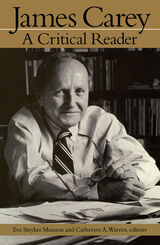 James Carey: A Critical Reader
Eve Stryker Munson
University of Minnesota Press, 1997 An essential guide to the thought of a central figure in media studies . James Carey-scholar, media critic, and teacher of journalists-almost single-handedly established the importance of defining a cultural perspective when analyzing communications. Interspersing Carey’s major essays with articles exploring his central themes and their importance, this collection provides a critical introduction to the work of this significant figure. Long before the “interpretive turn” became the fashion in the humanities and sociology, Carey was busily studying and combining the ideas of an impressive array of philosophers, sociologists, historians, and anthropologists, including John Dewey, Clifford Geertz, Raymond Williams, Thomas Kuhn, Max Weber, C. Wright Mills, Richard Rorty, Jürgen Habermas, Harold Innis, and Lewis Mumford. In James Carey: A Critical Reader, seven scholars who have been influenced by him consider his work and how it has affected the development of media studies. Carey has demonstrated that mass communications serve a complex function in society, with one central question reflecting his concerns: How does one make democracy work in a vast country that spans a continent? In his view, symbols, language, and those who create them are reality-creating, rather than reality-reflecting. Carey has examined the roles the media and the academy have played in creating and maintaining a public sphere, as well as the ways technology helps or hinders that project. Carey’s themes range from the strains on democracy and drawbacks of technology to the critique of journalism and the politics of academe. Contributors: G. Stuart Adam, Carleton U, Canada; James Carey, Columbia U; Carolyn Marvin, U of Pennsylvania; John Pauly, St. Louis U; Jay Rosen, New York U; Michael Schudson, U of California, San Diego.
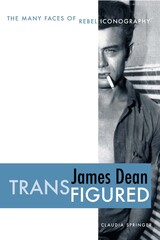 James Dean Transfigured: The Many Faces of Rebel Iconography
By Claudia Springer
University of Texas Press, 2007 After the death of James Dean in 1955, the figure of the teen rebel permeated the globe, and its presence is still felt in the twenty-first century. Rebel iconography—which does not have to resemble James Dean himself, but merely incorporates his disaffected attitude—has become an advertising mainstay used to sell an array of merchandise and messages. Despite being overused in advertisements, it still has the power to surprise when used by authors and filmmakers in innovative and provocative ways. The rebel figure has mass appeal precisely because of its ambiguities; it can mean anything to anyone. The global appropriation of rebel iconography has invested it with fresh meanings. Author Claudia Springer succeeds here in analyzing both ends of the spectrum—the rebel icon as a tool in upholding capitalism's cycle of consumption, and as a challenge to that cycle and its accompanying beliefs. In this groundbreaking study of rebel iconography in international popular culture, Springer studies a variety of texts from the United States and abroad that use this imagery in contrasting and thought-provoking ways. Using a cultural studies approach, she analyzes films, fiction, poems, Web sites, and advertisements to determine the extent to which the icon's adaptations have been effective as a response to the actual social problems affecting contemporary adolescents around the world.
The James Ford Bell Collection: A List of Additions, 1951-1954
John Parker
University of Minnesota Press, 1955
The James Ford Bell Collection: A list of Additions,1951-1954 was first published in 1955. Minnesota Archive Editions uses digital technology to make long-unavailable books once again accessible, and are published unaltered from the original University of Minnesota Press editions.The James Ford Bell Collection of the University of Minnesota Library is devoted to rare books, maps, and manuscripts pertaining to the history of European exploration and commerce. This bibliography lists recent additions to the collection and serves as a supplement to the previously published catalogue. The entries are annotated except where the title is self-explanatory, and the annotations point to the major interest which the items have for the Bell Collection. The items listed are original materials dating from the fifteenth to the end of the eighteenth century.
 The James Ford Bell Collection: A List of Additions, 1955-1959
John Parker
University of Minnesota Press, 1961
The James Ford Bell Collection: A List of Additions, 1955-1959 was first published in 1961. Minnesota Archive Editions uses digital technology to make long-unavailable books once again accessible, and are published unaltered from the original University of Minnesota Press editions.The James Ford Bell Collection of the University of Minnesota library is devoted to rare books, maps, and manuscripts pertaining to the history of European exploration and commerce. This bibliography lists more than 2,000 recent additions to the collection and serves as a supplement to the previously published catalogue. The entries are annotated except where the title is self-explanatory, and the annotations point to the major interest which the items have for the bell collection. The items listed are original materials dating from the fifteenth to the end of the eighteenth century. They portray the development of European knowledge of the earth as Europe’s commerce expanded to all of the other continents and show the manner in which this commerce was begun, organized and regulated.
The James Ford Bell Collection: A List of Additions, 1960-1964
John Parker
University of Minnesota Press, 1967
The James Ford Bell Collection: A List of Additions, 1960-1964 was first published in 1967. Minnesota Archive Editions uses digital technology to make long-unavailable books once again accessible, and are published unaltered from the original University of Minnesota Press editions.The James Ford Bell Collection of the University of Minnesota library is devoted to rare books, maps, and manuscripts which reflect the history of European exploration and trade from the fifteenth through the eighteenth centuries. In this List of Additions the 1,841 items which have been added to the collection during the period 1960-1964 are listed and briefly annotated. This collection supplements two previous Lists of Additions and the catalogue, Jesuit Relations and Other Americana in the Library of James F. Bell, all of which have been published by the university of Minnesota Press.
The James Ford Bell Library: A List of Additions, 1965-1969
John Parker
University of Minnesota Press, 1970
The James Ford Bell Library: A List of Additions, 1965-1969 was first published in 1970. Minnesota Archive Editions uses digital technology to make long-unavailable books once again accessible, and are published unaltered from the original University of Minnesota Press editions.This is a listing of the 891 books, manuscripts and other materials which were added to the James Ford Bell Library of the University of Minnesota from 1965 through 1969. The Bell Library is an endowed collection of rare items related to the history of European trade and expansion. Three earlier volumes similar to this one record the acquisitions from 1951 through 1964. The Lists of Additions are useful to librarians, research scholars, booksellers, and book and manuscript collectors.
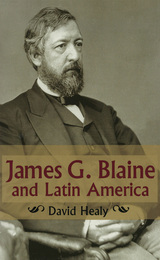 James G. Blaine and Latin America
David Healy
University of Missouri Press, 2001
James G. Blaine was one of the leading national political figures of his day, and probably the most controversial. Intensely partisan, the dominant leader of the Republican Party, and a major shaper of national politics for more than a decade, Blaine is remembered chiefly for his role as architect of the post-Civil War GOP and his two periods as secretary of state. He also was the Republican presidential candidate in the notorious mud-slinging campaign of 1884. His foreign policy was marked by its activism, its focus on Latin America, and its attempt to increase U.S. influence there.
James G. Blaine and Latin America asserts that Latin America lay at the heart of Blaine's foreign policy and his vision for America. David Healy examines seven major issues that collectively defined the secretary of state's methods, goals, and views regarding Latin America and, more broadly, the international role of the United States. Healy places his explorations within the larger context of Blaine's ongoing role as a national party leader, his relations with the presidents under whom he served, and the responses of his predecessors and successors toward the issues at hand in Latin America.
The result is a deeper understanding of Blaine's ambitious vision for his country's international role, his energy and aggressiveness in moving to achieve that vision, and his effective efforts to transmit his worldview to the public. Blaine's emphasis on the importance of Latin America to the United States and his conviction that his country should be a world power influenced a new generation of leaders who, at the end of the century, would go beyond his goals and usher in a new era.
James Gould Cozzens: Novelist of Intellect
Harry John Mooney
University of Pittsburgh Press, 1963
During the early 1930s, after James Gould Cozzens had published four romantic novels and then withdrawn them from circulation, he wrote the first three of what Brenden Gill called his eight “canonical works.” But it was only after the publication of By Love Possessed in 1957 that he achieved wide popularity. Mooney closely examines each of Cozzens’ novels, isolating and defining his main themes and addressing the critical acclaim and condemnation of his works.
Among the novels Mooney analyzes are: S.S. San Pedro, Castaway, The Last Adam, Men and Brethren, Ask Me Tomorrow, The Just and the Unjust, Guard of Honor, and By Love Possessed.
 James Hall, Literary Pioneer of the Ohio Valley
John T. Flanagan
University of Minnesota Press, 1941
James Hall, Literary Pioneer of the Ohio Valley was first published in 1941. Minnesota Archive Editions uses digital technology to make long-unavailable books once again accessible, and are published unaltered from the original University of Minnesota Press editions.
For generations the attention of students of American literature has been directed toward the Atlantic seaboard, but the rise of regional literature and the development of genuine artists in various parts of the United States has caused them to turn their scrutiny westward. High on the western horizon of the early 1800's stands James Hall, a literary pioneer in the Ohio Valley, one of the minor literary figures whose influence on the artistic consciousness of the frontier was widely felt.
Author, critic, journalist, editor, publisher, and historian—few men have had more to do with the early cultural development of the Middle West. Every historian of the Ohio and Mississippi valleys is indebted to Hall for facts and details of life in America in the early nineteenth century.
A circuit judge when there were only 55,000 people in all Illinois—he had an unparalleled opportunity to observe the life and customs of the times. A publisher of the first literary magazine west of the Ohio when there were more Indians and horse thieves in the state than there were literate readers—he had a virgin field for awakening the artistic, literary, even scientific, interest of the frontier.
He organized the first State Historical Society of Illinois, was state treasurer, published two newspapers, welcomed Lafayette on his triumphal tour, edited the first literary annual in the West, awarded a prize to Harriet Beecher (Stowe) for her "New England Sketch," published in his magazine. Moving to Cincinnati when it was at the peak of its sectional importance, an intellectual and cultural oasis on the frontier, Hall continued his sponsorship of education and culture.
James Hall's own published works were multitudinous in the fields of fiction, biography, poetry, criticism, history, and anthropology. His picture of the prairies in his day is still one of the best accounts ever written and his Indian Tribes of North America a monumental volume, but none of his works is of first-rate importance. Nevertheless, because of the tremendous variety of his activities and the breadth of his influence, he left his stamp upon the history and the literature of the region.
Hall's work is an honest, vigorous record of the path of the American pioneer in the days of the rapid growth and expansion of a new nation, and an understanding of his contribution is obligatory for every serious student of American literature.
 James Jackson Putnam and Psychoanalysis: Letters between Putnam and Sigmund Freud, Ernest Jones, William James, Sándor Ferenczi, and Morton Prince, 1877–1917
Nathan G. Hale
Harvard University Press, 1971 James Jackson Putnam was an established sixty-three-year-old Boston physician and Harvard professor of neurology when he and William James traveled to Clark University to hear Sigmund Freud's lectures on psychoanalysis. Putnam had become interested in psychoanalytic theory three years earlier in 1906; and, in 1908, his interest had been renewed when he met Freud's first English-speaking follower, twenty-eight-year-old Ernest Jones. It still surprised and even disturbed his friends, however, when Putnam became Freud's first American convert as well as a founder and first president of the American Psychoanalytic Association in 1911, and of the Boston Society for Psychoanalysis in 1914.
Of the 172 letters in this volume 163 are published here for the first time. All of the letters present new perspectives on the origins and early development of psychoanalysis in the United States. They provide the first documentary account of the founding of the American psychoanalytic organizations and the battles that surrounded the first public presentations of the psychoanalytic cause in Europe and America. They dramatize the extent to which Freud and Jones used Putnam as a confidant and how important Putnam's Yankee fairness, objectivity, and personal integrity were to the movement.
It is intriguing to discover how these men, long before formal training centers were established, educated each other by mail and learned by letters how to handle psychoanalytic problems never recognized or encountered before. Theory was debated as well, and the 89 letters between Putnam and Freud indicate how Freud's increasingly disillusioned stoicism clashed with Putnam's New England optimism and formed the basis for a significant dialogue on the nature of man, ethics, and the psychoanalytic mission. The letters suggest that Putnam encouraged Freud's interest in the analysis of conscience and of religion that Wilhelm Wundt and Carl Jung had earlier awakened. Nathan G. Hale, Jr., in an introductory essay, provides the background and the explanation for the surprising role Putnam played in what he came to call the "cause." Marian C. Putnam, who made the unpublished letters available, has written a warm recollection of her father. Judith Bernays Heller, Freud's niece, has translated the German texts, which are also published in the original German.
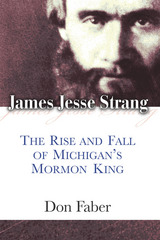 James Jesse Strang: The Rise and Fall of Michigan's Mormon King
Don Faber
University of Michigan Press, 2016 Few lives experience a meteoric rise and fall like that of James Jesse Strang’s. An unsuccessful lawyer from upstate New York, he converted to Mormonism in 1844 and quickly entered the inner circle of the controversial new faith’s founder, Joseph Smith Jr. Upon Smith’s assassination, Strang sought to be named his successor as leader of the Mormons. Instead, Strang was excommunicated in 1850, though not before gathering a group of followers, who settled with him on remote Beaver Island in northern Lake Michigan and ordained Strang king of the small enclave. King Strang elicited both ire and stubborn admiration from an ever-growing list of opponents, his actions closely monitored by President Millard Fillmore himself. In 1866, Strang was assassinated, seemingly with the assistance of federal authorities.
This captivating new biography by Don Faber recounts the fascinating story of Strang’s path from impoverished New York farm boy to one of the most colorful and contentious personalities in Michigan history. Avoiding the nonsense, misinformation, and twisted facts so prevalent about the man, readers meet the historical Strang stripped of myth, demonization, and popular fancy—a true celebrity of the mid-nineteenth century who both shaped and was shaped by the colorful times in which he lived. This book will appeal to readers interested in the history of Michigan, the nineteenth century, and the Second Great Awakening.
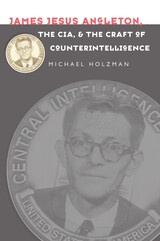 James Jesus Angleton, the CIA, and the Craft of Counterintelligence
Michael Holzman
University of Massachusetts Press, 2008 As chief of counterintelligence for the Central Intelligence Agency from the early 1950s to the early 1970s, James Jesus Angleton built a formidable reputation. Although perhaps best known for leading the agency's notorious "Molehunt"—the search for a Soviet spy believed to have infiltrated the upper levels of the American government—Angleton also played a key role in the U.S. intervention in the Italian election of 1948, in Israel's development of nuclear weapons, and in the management of the CIA's investigation of the assassination of John F. Kennedy. He later led CIA efforts to contain the Vietnam-era antiwar movement, including the campaign to destroy the liberal Catholic magazine Ramparts .
In this deeply researched biography, Michael Holzman uses Angleton's story to illuminate the history of the CIA from its founding in the late 1940s to the mid-1970s. Like many of his colleagues in the CIA, James Angleton learned the craft of espionage during World War II as an officer in the Office of Strategic Services (OSS), where he became a friend and
protégé of the British double agent Kim Philby. Yet Angleton's approach to counterintelligence was also influenced by his unusual Mexican American family background and his years at Yale as a student of the New Critics and publisher of modernist poets. His marriage to Cicely d'Autremont and the couple's friendship with E. E. and Marion Cummings became part of a network of cultural connections that linked the U.S. secret intelligence services and American writers and artists during the postwar period.
Drawing on a broad range of sources, including previously unexamined archival documents, personal letters, and interviews, Holzman looks beneath the surface of Angleton's career to reveal the sensibility that governed not only his personal aims and ambitions but those of the organization he served and helped shape.
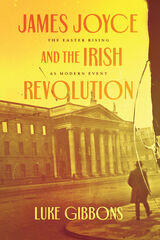 James Joyce and the Irish Revolution: The Easter Rising as Modern Event
Luke Gibbons
University of Chicago Press, 2023 A provocative history of Ulysses and the Easter Rising as harbingers of decolonization.
When revolutionaries seized Dublin during the 1916 Easter Rising, they looked back to unrequited pasts to point the way toward radical futures—transforming the Celtic Twilight into the electric light of modern Dublin in James Joyce’s Ulysses. For Luke Gibbons, the short-lived rebellion converted the Irish renaissance into the beginning of a global decolonial movement. James Joyce and the Irish Revolution maps connections between modernists and radicals, tracing not only Joyce’s projection of Ireland onto the world stage, but also how revolutionary leaders like Ernie O’Malley turned to Ulysses to make sense of their shattered worlds. Coinciding with the centenary of both Ulysses and Irish independence, this book challenges received narratives about the rebellion and the novel that left Ireland changed, changed utterly.
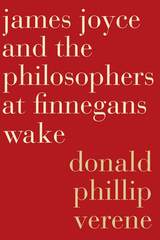 James Joyce and the Philosophers at Finnegans Wake
Donald Phillip Verene
Northwestern University Press, 2016 James Joyce and the Philosophers at Finnegans Wake explores how Joyce used the philosophers Nicholas Cusanus, Giordano Bruno, and Giambattista Vico as the basis upon which to write Finnegans Wake. Very few Joyce critics know enough about these philosophers and therefore often miss their influence on Joyce's great work. Joyce embraces these philosophic companions to lead him through the underworld of history with all its repetitions and resurrections, oppositions and recombinations. We as philosophical readers of the Wake go along with them to meet everybody and in so doing are bound "to encounter for the millionth time the reality of experience and to forge in the smithy" of our souls the "uncreated conscience" of humankind. Verene builds his study on the basis of years of teaching Finnegans Wake side by side with Cusanus, Bruno, and Vico, and his book will serve as a guide to readers of Joyce's novel.
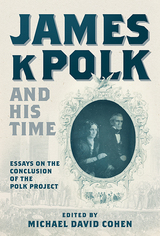 James K. Polk and His Time: Essays at the Conclusion of the Polk Project
Michael David Cohen
University of Tennessee Press, 2022 This collection arose out of a 2019 conference to commemorate the completion of the fourteen- volume Correspondence of James K. Polk. Its scholarship—which pays tribute to the Polk Project itself, as well as to the controversial nature of the Polk legacy—will result in a significant reinterpretation of the eleventh US president.
Contributors include John F. Polk, who examines the ways history has mischaracterized almost the entire Polk family tree, and Kelly Houston Jones, who investigates the family’s investments in slave-based agriculture. The fascinating life of Elias Polk, a man enslaved by the president, is compellingly related by Zacharie W. Kinslow. Asaf Almog analyzes the persistence of labels: Polk and fellow Democrats labeled their Whig opponents “Federalists,” he argues, with both rhetorical and substantive aims. Michael Gunther analyzes Polk’s authorization of the Smithsonian Institution and the Department of the Interior, seemingly at odds with his devotion to small government.
Taken together, the twelve essays unveil a more complex James K. Polk than the narrowly focused Jackson protégé and proponent of Manifest Destiny we often hear about. He was politically partisan but inspired by history and grounded in principle. His family’s long reliance on nonwhite Americans’ losses of freedom and land informed his policies on slavery and Indian removal, and the nature of the legislation at hand determined when he promoted a larger or a smaller federal government. James K. Polk and His Timehelps us to unde
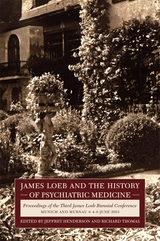 James Loeb and the History of Psychiatric Medicine: Proceedings of the Third James Loeb Biennial Conference, Munich and Murnau 4–6 June 2023
Jeffrey Henderson and Richard Thomas
Harvard University Press James Loeb (1867–1933), one of the great patrons and philanthropists of his time, left many enduring legacies both to America, where he was born and educated, and to his ancestral Germany, where he spent the second half of his life. Organized in celebration of the sesquicentenary of his birth, the James Loeb Biennial Conferences were convened to commemorate his achievements in four areas: the Loeb Classical Library (2017), collection and connoisseurship (2019), and after pandemic postponement, psychology and medicine (2023), and music (2025).
While the focus of the third conference shifted from Loeb as practitioner to Loeb as patient, the connection between his philanthropy and his personal experience remains clear and fascinating. Loeb suffered from the illness known today as severe bipolar disorder, for which he was treated by Emil Kraepelin (1856–1926), a pioneer in interdisciplinary brain and psychiatric research. Starting from the extensive records of this treatment, the volume’s contributors examine the history of mental illness from antiquity to the present in light of Loeb’s own condition, research, and contributions to medical humanism and psychiatric medicine.
 James Loeb, Collector and Connoisseur: Proceedings of the Second James Loeb Biennial Conference, Munich and Murnau 6–8 June 2019
Jeffrey Henderson and Richard F. Thomas
Harvard University Press, 2022 James Loeb (1867–1933), one of the great patrons and philanthropists of his time, left many enduring legacies both to America, where he was born and educated, and to his ancestral Germany, where he spent the second half of his life. Organized in celebration of the sesquicentenary of his birth, the James Loeb Biennial Conferences were convened to commemorate his achievements in four areas: the Loeb Classical Library (2017), collection and connoisseurship (2019), and after pandemic postponement, psychology and medicine (2023), and music (2025).
The subject of the second conference was Loeb’s deep and multifaceted engagement with the material culture of the ancient world as a scholar, connoisseur, collector, and curator. The volume’s contributors range broadly over the manifold connections and contexts, both personal and institutional, of Loeb’s archaeological interests, and consider these in light of the long history of collection and connoisseurship from antiquity to the present. Their essays also reflect on the contemporary significance of Loeb’s work, as the collections he shaped continue to be curated and studied in today’s rapidly evolving environment for the arts.
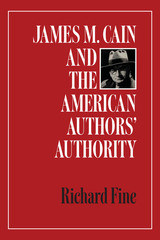 James M. Cain and the American Authors' Authority
By Richard Fine
University of Texas Press, 1992 The 1940s offered ever-increasing outlets for writers in book publishing, magazines, radio, film, and the nascent television industry, but the standard rights arrangements often prevented writers from collecting a fair share of the profits made from their work. To remedy this situation, novelist and screenwriter James M. Cain (The Postman Always Rings Twice,Double Indemnity, Mildred Pierce) proposed that all professional writers, including novelists, playwrights, poets, and screenwriters, should organize into a single cartel that would secure a fairer return on their work from publishers and producers. This organization, conceived and rejected within one turbulent year (1946), was the American Authors' Authority (AAA). In this groundbreaking work, Richard Fine traces the history of the AAA within the cultural context of the 1940s. After discussing the profession of authorship as it had developed in England and the United States, Fine describes how the AAA, which was to be a central copyright repository, was designed to improve the bargaining position of writers in the literary marketplace, keep track of all rights and royalty arrangements, protect writers' interests in the courts, and lobby for more favorable copyright and tax legislation. Although simple enough in its design, the AAA proposal ignited a firestorm of controversy, and a major part of Fine's study explores its impact in literary and political circles. Among writers, the AAA exacerbated a split between East and West Coast writers, who disagreed over whether writing should be treated as a money-making business or as an artistic (and poorly paid) calling. Among politicians, a move to unite all writers into a single organization smacked of communism and sowed seeds of distrust that later flowered in the Hollywood blacklists of the McCarthy era. Drawing insights from the fields of American studies, literature, and Cold War history, Fine's book offers a comprehensive picture of the development of the modern American literary marketplace from the professional writer's perspective. It uncovers the effect of national politics on the affairs of writers, thus illuminating the cultural context in which literature is produced and the institutional forces that affect its production.
 James M. Landis: Dean of the Regulators
Donald Ritchie
Harvard University Press, 1980 Like many of his generation, James M. Landis was motivated by a passion for public service. From the New Deal to the New Frontier, he devoted his life to shaping the many federal regulatory commissions and to making capitalism “live up to its pretensions.” Attacked by conservatives and liberals alike, he became the most important and most controversial figure in the history of the regulatory process. Donald A. Ritchie offers a superbly documented study of the man that analyzes the contributions of Landis's public career and the personal weaknesses that eventually undermined it, leading to his disbarment and disgrace.
Landis's story is really that of two men. One was a founder and New Deal Chairman of the Securities and Exchange Commission, a major writer and enforcer of regulatory legislation, youngest Dean of the Harvard Law School, and economic troubleshooter for Presidents Roosevelt, Truman, and Kennedy. The other was a private man unsure of his success and incapable of handling his own problems. His repeated failure to file his federal income tax returns, astonishing for a lawyer, was the most obvious—and most destructive—symptom of Landis's tumultuous inner confusion.
Ritchie's exhaustive research into Landis' papers—at Harvard University, the Library of Congress, and the Roosevelt, Truman, and Kennedy libraries—and interviews with Landis's family, associates, and psychiatrist help to unravel the mystery of this problematical man. The result is an outstanding biography of a major force behind business and government policy in the twentieth century.
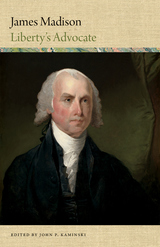 James Madison: Liberty's Advocate
John P. Kaminski
Wisconsin Historical Society Press, 2018 A Word Portrait of an American Founder.
America has had few political thinkers who have rivalled James Madison. The son of a wealthy planter, Madison was an unhealthy child and was beset by physical infirmities throughout his long life, and grew into a cerebral man. Madison left Virginia to attend the College of New Jersey, but returned to his native state after completing his studies. Though he aspired to be a college professor, Madison instead went into public service and became one of the most influential, guiding voices of the Founding Era. Madison’s Virginia Plan would be used as a blueprint for the Constitutional Convention, where the Articles of Confederation would be replaced with a new Constitution that bore traces of Madison’s influence throughout.
Editor John Kaminski has gathered a remarkable collection of quotations by and about James Madison for the third installment of his Word Portraits of America’s Founders series. Through these words by and about Madison, we learn more about one of the country’s most influential Founding Fathers, who held a lifelong commitment to liberty and opposed oppression.
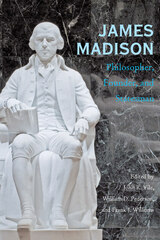 James Madison: Philosopher, Founder, and Statesman
John R. Vile
Ohio University Press, 2008 James Madison: Philosopher, Founder, and Statesman presents fresh scholarship on the nation’s fourth president, who is often called both the father of the U.S. Constitution and the father of the Bill of Rights. These essays by historians and political scientists from the United States and abroad focus on six distinct aspects of Madison’s life and work: his personality and development as a statesman; his work at the Constitutional Convention of 1787 and contributions to larger constitutional design; his advocacy for the adoption of the Bill of Rights; his controversial role as a party leader; his presidency; and his life after leaving office. James Madison continues to be regarded as one of America’s great political theorists, a man who devoted his life to, and who found fulfillment in, public service. His philosophical contributions remain vital to any understanding of the modern American polity. This book will be of great interest to political scientists and theorists, as well as to historians of early American history and politics.
James Madison: The Founding Father
Robert Allen Rutland
University of Missouri Press, 1997 Available for the first time in paperback, James Madison: The Founding Father is a lively portrait of the man who essentially fathered our constitutional guarantees of civil and religious liberty. Focusing on the role Madison played at the Continental Congress and in each stage of the formation of the American Republic, Robert Allen Rutland also covers Madison's relationship with his beloved wife, Dolley, his fifty-year friendship with Thomas Jefferson, and his years as a respected elder statesman after serving as secretary of state and fourth president of the United States.
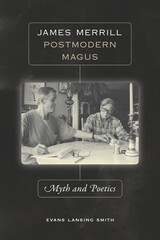 James Merrill, Postmodern Magus: Myth and Poetics
Evans Lansing Smith
University of Iowa Press, 2008 One of the unique voices in our century, James Merrill was known for his mastery of prosody; his ability to write books that were not just collected poems but unified works in which each individual poem contributed to the whole; and his astonishing evolution from the formalist lyric tradition that influenced his early work to the spiritual epics of his later career. Merrill's accomplishments were recognized with a Pulitzer Prize in 1977 for Divine Comedies and a National Book Critics Circle Award in 1983 for The Changing Light at Sandover.
In this meticulously researched, carefully argued work, Evans Lansing Smith argues that the nekyia, the circular Homeric narrative describing the descent into the underworld and reemergence in the same or similar place, confers shape and significance upon the entirety of James Merrill’s poetry. Smith illustrates how pervasive this myth is in Merrill’s work – not just in The Changing Light at Sandover, where it naturally serves as the central premise of the entire trilogy, but in all of the poet’s books, before and after that central text.
By focusing on the details of versification and prosody, Smith demonstrates the ingenious fusion of form and content that distinguishes Merrill as a poet. Moving beyond purely literary interpretations of the poetry, Smith illuminates the numerous allusions to music, art, theology, philosophy, religion, and mythology found throughout Merrill’s work.
James Milton Turner and the Promise of America: The Public Life of a Post-Civil War Black Leader
Gary R. Kremer
University of Missouri Press, 2020 James Milton Turner, Missouri's most prominent nineteenth-century African American political figure, possessed a deep faith in America. The Civil War, he believed, had purged the land of its sins and allowed the country to realize what had always been its promise: the creation of a social and political environment in which merit, not race, mattered.
Born a slave, Turner gained freedom when he was a child and received his education in clandestine St. Louis schools, later briefly attending Oberlin College. A self-taught lawyer, Turner earned a statewide reputation and wielded power far out of proportion to Missouri's relatively small black population.
After working nearly a decade in Liberia, Turner never regained the prominence he had enjoyed during Reconstruction.
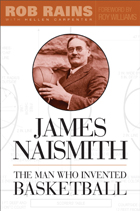 James Naismith: The Man Who Invented Basketball
Rob Rains with Hellen Carpenter, Foreword by Roy Williams
Temple University Press, 2009 It seems unlikely that James Naismith, who grew up playing “Duck on the Rock” in the rural community of Almonte, Canada, would invent one of America’s most popular sports. But Rob Rains and Hellen Carpenter’s fascinating, in-depth biography James Naismith: The Man Who Invented Basketball shows how this young man—who wanted to be a medical doctor, or if not that, a minister (in fact, he was both)—came to create a game that has endured for over a century.
James Naismith reveals how Naismith invented basketball in part to find an indoor activity to occupy students in the winter months. When he realized that the key to his game was that men could not run with the ball, and that throwing and jumping would eliminate the roughness of force, he was on to something. And while Naismith thought that other sports provided better exercise, he was pleased to create a game that “anyone could play.”
With unprecedented access to the Naismith archives and documents, Rains and Carpenter chronicle how Naismith developed the 13 rules of basketball, coached the game at the University of Kansas—establishing college basketball in the process—and was honored for his work at the 1936 Olympic games in Berlin.
James Oliver Curwood: God's Country and the Man
Judith A. Eldridge
University of Wisconsin Press, 1993 When the wounded bear he faced on a mountain ledge that day turned aside, James Curwood felt that he had been spared. From this encounter he became an avid conservationist. He wrote relentlessly—magazine stories and books and then for the new medium of motion pictures. Like many authors of his time, he was actively involved in movie-making until the plight of the forests and wildlife in his home state of Michigan turned his energies toward conservation.
A man ahead of his time, and quickly forgotten after his death in 1927, his gift of himself to his readers and to nature has finally come to be appreciated again two generations later.
James P. Cannon and the Origins of the American Revolutionary Left, 1890-1928
Bryan D. Palmer
University of Illinois Press, 2010 Bryan D. Palmer's award-winning study of James P. Cannon's early years (1890-1928) details how the life of a Wobbly hobo agitator gave way to leadership in the emerging communist underground of the 1919 era. This historical drama unfolds alongside the life experiences of a native son of United States radicalism, the narrative moving from Rosedale, Kansas to Chicago, New York, and Moscow. Written with panache, Palmer's richly detailed book situates American communism's formative decade of the 1920s in the dynamics of a specific political and economic context. Our understanding of the indigenous currents of the American revolutionary left is widened, just as appreciation of the complex nature of its interaction with international forces is deepened.
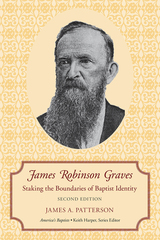 James Robinson Graves: Staking the Boundaries of Baptist Identity
James A. Patterson
University of Tennessee Press, 2020 James A. Patterson’s groundbreaking study of the life and mind of James Robinson Graves explores the history of Landmarkism in the nineteenth century. Under this doctrine, Graves proposed that “true” Baptists should be able to trace their lineage directly to the early church, rather than through the strands of Protestantism. Controversial in its day, and often poorly understood now, Landmarkism, in Patterson’s nuanced interpretation, is important for understanding an essential feature of Baptist life to the present day: how do Baptists stake out their identities in reference to other Baptists and to members of competing denominations? While Graves has been widely dismissed by recent historians, in Patterson’s skillful revision, this figure draws much nearer to central concerns of Baptist thinking since the First Great Awakening.
This addition to the America’s Baptists series blends biographical insight with a thematic approach that focuses primarily on Graves’s controversial beliefs about ecclesiology, Baptist history, and eschatology. Patterson divides this work into seven chapters that progress chronologically, and this updated edition includes an expanded discussion of Christian republicanism, elaborates on the question of Graves and race, and features a longer epilogue to account for recent scholarship on Graves and Landmarkism.
James Robinson Graves is an accessible introduction to the significant albeit disputed role that the Landmark tradition played in the shaping of Southern Baptist life and thought. Seminary students and scholars of nineteenth-century Southern Baptist history will find a rich new interpretation of this misunderstood figure.
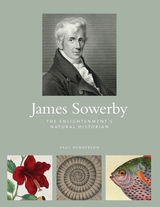 James Sowerby: The Enlightenment's Natural Historian
Paul Henderson
Royal Botanic Gardens, Kew, 2015 The mid-eighteenth to mid-nineteenth century was a time of illustrious achievements in the world of botanical art. Artists who once sought to please the whims of wealthy patrons were turning to scientists for inspiration, and they now had access to countless new botanical specimens thanks to prolific explorers and plant hunters. One of the best botanical artists and most knowledgeable natural historians of this era was James Sowerby (1757–1822). Talented and prolific, his crowning achievement was Sowerby's Botany, a thirty-six volume work on the botany of England that contained 2,592 hand-colored botanical engravings. Despite Sowerby’s place in the pantheon of botanical artists, no full biography of the artist exists. Paul Henderson remedies this with a thoroughly researched and wholly fascinating look at Sowerby’s life and legacy.
Henderson explores Sowerby’s artistic achievements as well as his place at the center of a thriving network of artists and scientists. Sowerby worked closely with key botanists of the time, influencing the likes of Sir Joseph Banks and James Smith, as well as Dawson Turner, James Dickson, Aylmer Lambert, and William Woodville. He also contributed illustrations to the earliest volumes of The Botanical Magazine (later known as Curtis's Botanical Magazine). Specimens from his collection round out the holdings of museums around the world, and he has become the paterfamilias of a talented line of botanical and natural science illustrators.
Henderson’s Sowerby’s Botany is beautifully illustrated with Sowerby’s artwork and includes extracts from letters, manuscripts, and natural history publications. It is a fascinating story of an influential artist working at the intersections of art and nature at a time of unprecedented scientific enlightenment.
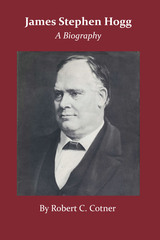 James Stephen Hogg: A Biography
By Robert C. Cotner
University of Texas Press, 1959 No other governor has become so completely identified with Texas and its citizens as Jim Hogg, the first native Texan to hold the state's highest office. His fame was not, however, easily earned. Orphaned at twelve, he worked as farmhand, typesetter, and country editor to finance his study of law, an endeavor that eventually led him into public life. Even before his admission to the bar in 1875 he served as justice of the peace in Wood County. Later, in two terms as district attorney (1881–1885), he proved himself a fearless prosecutor. His growing reputation, with his magnetic personality, brought him the attorney generalship in 1887, and in that office he fulfilled his campaign promises to enforce all laws. During Hogg's tenure, suits brought by his department resulted in the restoration of more than a million acres of state lands held by the railroads. In 1890 Hogg was elected governor. Early the next year he began urging his reform program, the keystone of which was establishment of the Railroad Commission. He also brought about the passage of laws preventing the watering of railroad securities, the indiscriminate issuance of municipal securities, and the establishment of landholding companies. Land ownership by aliens was likewise restricted. Throughout Hogg's public life, from iustice of the peace to governor, he was motivated by his concern for the welfare of the people. Invariably his criterion for evaluation of an issue was the effect of a decision upon the common welfare. In this democratic progressivism he was the Texas version of Thomas Jefferson or Theodore Roosevelt. Molded by his varied experiences, Jim Hogg was a man of many professions—printer, lawyer, politician, statesman, oil magnate. In these relationships he was still a warmly human person, a loving son, brother, husband, father, friend. His ambition to provide abundantly for his family was expansive enough to include all Texans; so his love for "the people" was reiterated in his public benefactions, through which Texans are even today still sharing his wealth. Jim Hogg's varied public life and his heart-warming personal life are dramatically presented in this absorbing biography. In it, the far-sweeping panorama of Texas development in the late nineteenth and early twentieth centuries is shown in relation to his dreams and achievements.
 James the Minimalist: An Essay on the Late Novels
John Brenkman
University of Chicago Press An experiment in criticism that explores Henry James’s late works through the lens of minimalism.
Henry James’s last completed novels—The Ambassadors, The Wings of the Dove, and The Golden Bowl—are among the greatest and most demanding achievements of modern fiction. The stories they tell are perverse: characters are compelling even at their most cruel, their actions often calculating and loving at the same time. The novels draw on deep-seated myths but end with an unsettling lack of finality. And their dense, involuted language tracks the movements of consciousness with uncompromising artistry—the ultimate flowering of the Late James style.
In this work of experimental criticism, John Brenkman is concerned with minimalism in two senses. First, with James’s own minimalism—his intense scrutiny of couples and their erotic energies to the exclusion of so much else. And second, through a kind of minimalization in literary critical reading, Brenkman cuts through James’s amplifications to find the essence that churns beneath the intricate prose of the late novels. Showing how James evokes not only protagonists’ subjectivity but more importantly what only exists in-between—that is, between lovers, between spouses, between rivals—Brenkman reveals James’s transformation of the marriage novel and excavation of the couple form itself.
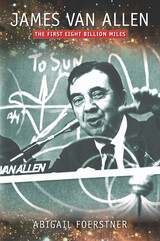 James Van Allen: The First Eight Billion Miles
Abigail Foerstner
University of Iowa Press, 2009 Astrophysicist and space pioneer James Van Allen (1914–2006), for whom the Van Allen radiation belts were named, was among the principal scientific investigators for twenty-four space missions, including Explorer I in 1958, the first successful U.S. satellite; Mariner 2’s 1962 flyby of Venus, the first successful mission to another planet; and the 1970s Pioneer 10 and Pioneer 11 missions that surveyed Jupiter and Saturn. Although he retired as a University of Iowa professor of physics and astronomy in 1985, he remained an active researcher, using his campus office to monitor data from Pioneer 10—on course to reach the edge of the solar system when its signal was lost in 2003—until a short time before his death at the age of ninety-one. Now Abigail Foerstner blends space science drama, military agendas, cold war politics, and the events of Van Allen’s lengthy career to create the first biography of this highly influential physicist. Drawing on Van Allen’s correspondence and publications, years of interviews with him as well as with more than a hundred other people, and declassified documents from such archives as the Jet Propulsion Laboratory, the Kennedy Space Center, and the Applied Physics Laboratory, Foerstner describes Van Allen’s life from his Iowa childhood to his ?rst experiments at White Sands to the years of Explorer I until his death in 2006. Often called the father of space science, James Van Allen led the way to mapping a new solar system based on the solar wind, massive solar storms, and cosmic rays. Pioneer 10 alone sent him more than thirty years of readings that helped push our recognition of the boundary of the solar system billions of miles past Pluto. Abigail Foerstner’s compelling biography charts the eventful life and time of this trailblazing physicist.
James Watt, Chemist: Understanding the Origins of the Steam Age
David Phillip Miller
University of Pittsburgh Press, 2009 In the Victorian era, James Watt became an iconic engineer, but in his own time he was also an influential chemist. Miller examines Watt’s illustrious engineering career in light of his parallel interest in chemistry, arguing that Watt’s conception of steam engineering relied upon chemical understandings.
Part I of the book—"Representations"—examines the way James Watt has been portrayed over time, emphasizing sculptural, pictorial and textual representations from the nineteenth century. As an important contributor to the development of arguably the most important technology of industrialization, Watt became a symbol that many groups of thinkers were anxious to claim. Part II—"Realities"—focuses on reconstructing the unsung "chemical Watt" instead of the lionized engineer.
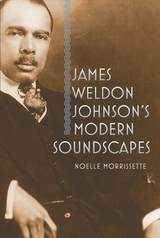 James Weldon Johnson's Modern Soundscapes
Noelle Morrissette
University of Iowa Press, 2013 James Weldon Johnson’s Modern Soundscapes provides an evocative and meticulously researched study of one of the best known and yet least understood authors of the New Negro Renaissance era. Johnson, familiar to many as an early civil rights leader active in the National Association for the Advancement of Colored People and an intentionally controversial writer on the subject of the significance of race in America, was one of the most prolific, wide-ranging, and yet elusive authors of twentieth-century African American literature.
Johnson realized early in his writing career that he could draw attention to the struggles of African Americans by using unconventional literary methods such as the incorporation of sound into his texts. In this groundbreaking work, literary critic Noelle Morrissette examines how his literary representation of the extremes of sonic experience—functioning as either cultural violence or creative force—draws attention to the mutual contingencies and the interdependence of American and African American cultures. Moreover, Morrissette argues, Johnson represented these “American sounds” as a source of multiplicity and diversity, often developing a framework for the interracial transfer of sound. The lyricist and civil rights leader used sound as a formal aesthetic practice in and between his works, presenting it as an unbounded cultural practice that is as much an interracial as it is a racially distinct cultural history.
Drawing on archival materials such as early manuscript notes and drafts of Johnson’s unpublished and published work, Morrissette explores the author’s complex aesthetic of sound, based on black expressive culture and cosmopolitan interracial experiences. This aesthetic evolved over the course of his writing life, beginning with his early Broadway musical comedy smash hits and the composition of Autobiography of an Ex-Colored Man (1912), and developing through his “real” autobiography, Along This Way (1933). The result is an innovative new interpretation of the works of one of the early twentieth century’s most important and controversial writers and civil rights leaders.
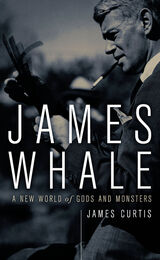 James Whale: A New World Of Gods And Monsters
James Curtis
University of Minnesota Press, 2003 The definitive biography of this innovative and influential director James Whale directed some of the most stylish movies of the 1930s, but he was most successful in a genre he virtually invented. Most famously in Frankenstein, but also in The Invisible Man and The Bride of Frankenstein, Whale created a new type of horror film—sophisticated, tragic, and morbidly humorous. Whale made grim war dramas, light comedy, adventure, mystery, and even a movie version of the musical Show Boat. However, his career faltered and, being openly gay, he found work increasingly hard to get. He quit his film work just ten years after the triumph of Frankenstein, and died as a result of suicide. James Curtis has written the definitive life of James Whale, taking him from poverty in rural England to the squalor of a German prison camp, to the excitement of London’s West End, and ultimately to Hollywood, where he profoundly influenced several generations of filmmakers.
 James Wright: The Poetry of a Grown Man; Constancy and Transition in the Work of James Wright
Kevin Stein
Ohio University Press, 1988 Although some critics have identified two phases in the poetry of James Wright and have isolated particulars of his movement from traditional to more experimental forms, few have noted also the elements of constancy in the evolution of his poetry. In this first comprehensive scholarly introduction to Wright’s work, Stein traces the unified growth of Wright’s poetry, asserting that while stylistic changes are often more apparent than actual, Wright does undergo a continuing personal and aesthetic development throughout his career. Stein examines the entire body of Wright’s poetry, including such previously unpublished materials as the collection Amenities of Stone.
Stein locates Wright in the Emersonian tradition which sees struggle with language as a struggle with the self -- a locating and defining of the self within a world of natural facts. Language, then, becomes a means of self-definition, and to be frivolous or irresponsible with language becomes a negation of the self and the world it inhabits. For Wright, “the poetry of a grown man” issues from this understanding. Because Wright joins the act of language with the act of selfhood, it is not surprising that the mode and tenor of his work would alter as the self redefines its values and goals, its very identity. In fact, Stein divides Wright’s career into three interrelated stages of development: “containment,” in which he relies on traditional religious and rhetorical measures to distance himself from a world of experience; “vulnerability,” in which he enters the experiential world where the self is rewarded and equally threatened; and “integration,” in which he accepts and balances the necessary combination of beauty and horror inherent in being human within a natural world.
Stein shows that throughout his career Wright’s presiding concern is to discover a way of writing and a way of life that might overcome the effects of an individual’s separation from the human community, the natural world, and the spiritual presence in the universe. In Wright’s world, to do less is to betray one’s language -- and one’s self.
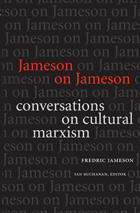 Jameson on Jameson: Conversations on Cultural Marxism
Fredric Jameson
Duke University Press, 2007 Fredric Jameson is one of the most influential literary and cultural critics writing today. He is a theoretical innovator whose ideas about the intersections of politics and culture have reshaped the critical landscape across the humanities and social sciences. Bringing together ten interviews conducted between 1982 and 2005, Jameson on Jameson is a compellingly candid introduction to his thought for those new to it, and a rich source of illumination and clarification for those seeking deeper understanding. Jameson discusses his intellectual and political preoccupations, most prominently his commitment to Marxism as a way of critiquing capitalism and the culture it has engendered. He explains many of his key concepts, including postmodernism, the dialectic, metacommentary, the political unconscious, the utopian, cognitive mapping, and spatialization. Jameson on Jameson displays Jameson’s extraordinary grasp of contemporary culture—architecture, art, cinema, literature, philosophy, politics, psychoanalysis, and urban geography—as well as the challenge that the geographic reach of his thinking poses to the Eurocentricity of the West. Conducted by accomplished scholars from United States, Egypt, Korea, China, Sweden, and England, the interviews elicit Jameson’s reflections on the broad international significance of his ideas and their applicability and implications in different cultural and political contexts, including the present phase of globalization. The volume includes an introduction by Jameson and a comprehensive bibliography of his publications in all languages. Interviewers
Mona Abousenna
Abbas Al-Tonsi
Srinivas Aravamudan
Jonathan Culler
Sara Danius
Leonard Green
Sabry Hafez
Stuart Hall
Stefan Jonsson
Ranjana Khanna
Richard Klein
Horacio Machin
Paik Nak-chung
Michael Speaks
Anders Stephanson
Xudong Zhang
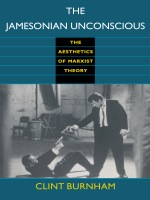 The Jamesonian Unconscious: The Aesthetics of Marxist Theory
Clint Burnham
Duke University Press, 1995 Imagine Fredric Jameson—the world’s foremost Marxist critic—kidnapped and taken on a joyride through the cultural ephemera, generational hype, and Cold War fallout of our post-post-contemporary landscape. In The Jamesonian Unconscious, a book as joyful as it is critical and insightful, Clint Burnham devises unexpected encounters between Jameson and alternative rock groups, new movies, and subcultures. At the same time, Burnham offers an extraordinary analysis of Jameson’s work and career that refines and extends his most important themes.
In an unusual biographical move, Burnham negotiates Jameson’s major works—including Marxism and Form, The Political Unconscious, and Postmodernism, or, The Cultural Logic of Late Capitalism—by way of his own working-class, queer-ish, Gen-X background and sensibility. Thus Burnham’s study draws upon an immense range of references familiar to the MTV generation, including Reservoir Dogs, theorists Slavoj Zizek and Pierre Bourdieu, The Satanic Verses, Language poetry, the collapse of state communism in Eastern Europe, and the indie band Killdozer. In the process, Burnham addresses such Jamesonian questions as how to imagine the future, the role of utopianism in capitalist culture, and the continuing relevance of Marxist theory.
Through its redefinition of Jameson’s work and compelling reading of the political present, The Jamesonian Unconscious defines the leading edge of Marxist theory. Written in a style by turns conversational, playful, and academic, this book will appeal to students and scholars of Marxism, critical theory, aesthetics, narratology, and cultural studies, as well as the wide circle of readers who have felt and understood Jameson’s influence.
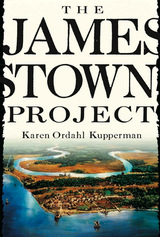 The Jamestown Project
Karen Ordahl Kupperman
Harvard University Press, 2007 Listen to a short interview with Karen Ordahl KuppermanHost: Chris Gondek | Producer: Heron & Crane
Captain John Smith's 1607 voyage to Jamestown was not his first trip abroad. He had traveled throughout Europe, been sold as a war captive in Turkey, escaped, and returned to England in time to join the Virginia Company's colonizing project. In Jamestown migrants, merchants, and soldiers who had also sailed to the distant shores of the Ottoman Empire, Africa, and Ireland in search of new beginnings encountered Indians who already possessed broad understanding of Europeans. Experience of foreign environments and cultures had sharpened survival instincts on all sides and aroused challenging questions about human nature and its potential for transformation.
It is against this enlarged temporal and geographic background that Jamestown dramatically emerges in Karen Kupperman's breathtaking study. Reconfiguring the national myth of Jamestown's failure, she shows how the settlement's distinctly messy first decade actually represents a period of ferment in which individuals were learning how to make a colony work. Despite the settlers' dependence on the Chesapeake Algonquians and strained relations with their London backers, they forged a tenacious colony that survived where others had failed. Indeed, the structures and practices that evolved through trial and error in Virginia would become the model for all successful English colonies, including Plymouth.
Capturing England's intoxication with a wider world through ballads, plays, and paintings, and the stark reality of Jamestown--for Indians and Europeans alike--through the words of its inhabitants as well as archeological and environmental evidence, Kupperman re-creates these formative years with astonishing detail.
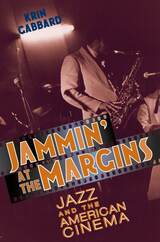 Jammin' at the Margins: Jazz and the American Cinema
Krin Gabbard
University of Chicago Press, 1996 American cinema has long been fascinated by jazz and jazz musicians. Yet most jazz films aren't really about jazz. Rather, as Krin Gabbard shows, they create images of racial and sexual identity, many of which have become inseparable from popular notions of the music itself. In Jammin' at the Margins, Gabbard scrutinizes these films, exploring the fundamental obsessions that American culture has brought to jazz in the cinema.
Gabbard's close look at jazz film biographies, from The Jazz Singer to Bird, reveals Hollywood's reluctance to acknowledge black subjectivity. Black and even white jazz artists have become vehicles for familiar Hollywood conceptions of race, gender, and sexuality. Even Scorsese's New York, New York and Spike Lee's Mo' Better Blues have failed to disentangle themselves from entrenched stereotypes and conventions.
Gabbard also examines Hollywood's confrontation with jazz as an elite art form, and the role of the jazz trumpet as a crucial signifier of masculinity. Finally, he considers the acting careers of Louis Armstrong, Nat King Cole, and Hoagy Carmichael; Duke Ellington's extraordinary work in films from 1929 until the late 1960s; and the forgotten career of Kay Kyser, star of nine Hollywood films and leader of a popular swing band.
This insightful look at the marriage of jazz and film is a major contribution to film, jazz, and cultural studies.
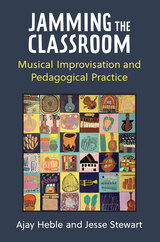 Jamming the Classroom: Musical Improvisation and Pedagogical Practice
Ajay Heble and Jesse Stewart
University of Michigan Press, 2023 Drawing on a mix of collaborative autoethnography, secondary literature, interviews with leading improvisers, and personal anecdotal material, Jamming the Classroom discusses the pedagogy of musical improvisation as a vehicle for teaching, learning, and enacting social justice. Heble and Stewart write that to “jam the classroom” is to argue for a renewed understanding of improvisation as both a musical and a social practice; to activate the knowledge and resources associated with improvisational practices in an expression of noncompliance with dominant orders of knowledge production; and to recognize in the musical practices of aggrieved communities something far from the reaches of conventional forms of institutionalized power, yet something equally powerful, urgent, and expansive. With this definition of jamming the classroom in mind, Heble and Stewart argue that even as improvisation gains recognition within mainstream institutions (including classrooms in universities), it needs to be understood as a critique of dominant institutionalized assumptions and epistemic orders. Suggesting a closer consideration of why musical improvisation has been largely expunged from dominant models of pedagogical inquiry in both classrooms and communities, this book asks what it means to theorize the pedagogy of improvised music in relation to public programs of action, debate, and critical practice.
 Jamón and Halal: Lessons in Tolerance from Rural Andalucía
Christina Civantos
Amherst College Press, 2022 Contemporary Spain reflects broader patterns of globalization and has been the site of tensions between nationalists and immigrants. This case study examines a rural town in Spain’s Andalucía in order to shed light on the workings of coexistence. The town of Órgiva’s diverse population includes hippies from across Europe, European converts to Sufi Islam, and immigrants from North Africa. Christina Civantos combines the analysis of written and visual cultural texts with oral narratives from residents. In this book, we see that although written and especially televisual narratives about the town highlight tolerance and multiculturalism, they mask tensions and power differentials. Toleration is an ongoing negotiation, and this book shows us how we can identify the points of contact that create robust, respect-based tolerance.
“This is a book that is both a personal account and a rigorous academic study. It is a model for the kind of engaged humanistic work we are now beginning to see as a hallmark of the post-theory moment, and one that remembers the hard lessons of ethnographic fieldwork as well as the challenging foundational work from philosophically-tinged theory.” —Debra A. Castillo, Cornell University
“Filled with rich descriptions and interwoven personal anecdotes of both Civantos and her interlocuters that complement scholarly analysis.” —Jessica R. Boll, Carroll University
 Jan Compagnie in the Straits of Malacca, 1641–1795: Mis Sea#96
Dianne Lewis
Ohio University Press, 1995 In 1500 Malay Malacca was the queen city of the Malay Archipelago, one of the great trade centers of the world. Its rulers, said to be descendents of the ancient line of Srivijaya, dominated the lands east and west of the straits. The Portuguese, unable to compete in the marketplace, captured the town. They were followed a hundred years later by the Dutch who, lured in their turn by Malacca as symbol of the wealth and luxury of the east, were to rule this port city for more than a hundred and fifty years. It proved to be, in many ways, an empty conquest. Portuguese and Dutch governments imposed restrictions on Malacca’s trade, driving it to the newer ports in the north and south. Moreover, by the time the Dutch finally secured the town, they had established their own port at Batavia, in Java. Dutch Malacca was, by 1701, “a place of little trade.” Why then did the Dutch maintain their occupation of the port? Lewis draws on the extensive correspondence of the Dutch East India Company to examine the role the Dutch played as Malacca’s rulers in the eighteenth-century Malay world, arguing that their presence, though generally too weak to secure their own interests, disrupted the traditional political and economic organization of the Malay polities, contributing significantly to the disarray that beset the Malay world at the beginning of the nineteenth century.
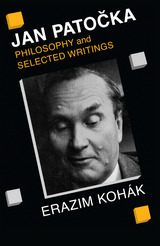 Jan Patocka: Philosophy and Selected Writings
Erazim Kohák
University of Chicago Press, 1989 One of the most important Central European philosophers of this century, Jan Patocka (1907-77) was a student and heir of Masaryk, Husserl, and Heidegger as well as a philosopher and historian of ideas in his own right. Patocka, who was forced to retire prematurely from Charles University in Prague for his political convictions, died of a brain hemorrhage while under Czech police interrogation for having signed the human rights manifesto Charta 77. Although many of his works are available in French and German, in this volume Erazim Kohák has translated Patocka's central philosophical texts into English for the first time.
As a student and personal friend of Husserl, Patocka was keenly aware of the focal role of reason in the constitution of experienced reality. Simultaneously, as a student of Heidegger, he was no less aware of the irreducible autonomy of that reality. This double recognition led Patocka on a lifelong philosophical quest for a synthesis that would bridge modernity's split between the freedom of humans and the givenness of the world and, more broadly, between the Enlightenment and romanticism. For the philosophical reader, Patocka's perceptive writings provide the most helpful key to understanding the basic modern dialogue acted out by Husserl and Heidegger. Yet Patocka, widely respected for his writings on culture and the arts as well as for his studies of J. A. Comenius and the history of science, offers much more: a comprehensive attempt to come to terms with our intellectual heritage and our divided present.
Kohák, as well as translating the writings, provides a comprehensive introduction, covering the full scope of Patocka's thought, and a complete bibliography of his writings. The result is an intellectually rich volume equally well suited as an introduction to Patocka, an advanced study in phenomenology, and a historical insight into philosophy behind the Iron Curtain since 1938.
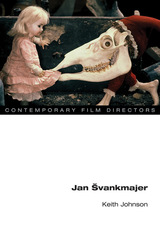 Jan Svankmajer
Keith Johnson
University of Illinois Press, 2017 Jan Svankmajer enjoys a curious sort of anti-reputation: he is famous for being obscure. Unapologetically surrealist, Svankmajer draws on the traditions and techniques of stop-motion animation, collage, montage, puppetry, and clay to craft bizarre filmscapes. If these creative choices are off-putting to some, they have nonetheless won the Czech filmmaker recognition as a visionary animator. Keith Leslie Johnson explores Svankmajer's work as a cinema that spawns new and weird life forms ”hybrids of machine, animal, and non-organic materials like stone and dust. Johnson's ambitious approach unlocks access to the director's world, a place governed by a single, uncanny order of being where all things are at once animated and inert. For Svankmajer, everything is at stake in every aspect of life, whether that life takes the form of an object, creature, or human. Sexuality, social bonds, religious longings ”all get recapitulated on the stage of inanimate things. In Johnson's view, Svankmajer stands as the proponent of a biopolitical, ethical, and ecological outlook that implores us to reprogram our relationship with the vital matter all around us, including ourselves and our bodies.
 Jan van Ruusbroec, Mystical Theologian of the Trinity
Rik Van Nieuwenhove
University of Notre Dame Press, 2003 Jan van Ruusbroec (1293--1381), a Flemish mystical theologian, was one of the most original Trinitarian thinkers in the medieval West. Yet, his works-written in Middle-Dutch-have remained relatively unknown. In this book, Rik Van Nieuwenhove presents the first major study in English of Ruusbroec's thought. Van Nieuwenhove explores in detail Ruusbroec's theology of the Trinity, his anthropology, Christology, and his understanding of union with God.
Van Nieuwenhove's study reveals that Ruusbroec, while incorporating aspects of the rich theological and spiritual tradition that preceded him, wrote at the beginning of a modern age in which mystical theology changed radically in nature. Ruusbroec claimed that the divine Persons are subject to an eternal dynamic of procession or out-going from the Father, on the one hand, and returning to the shared divine essence, on the other. The human person is called to participate in this continuous ebbing and flowing by leading a life that combines contemplation and charitable activity. Ruusbroec argued that mysticism should be interpreted in terms of a transformation of the human person rather than in terms of an immediate experience of God.
Jan van Ruusbroec, Mystical Theologian of the Trinity is an innovative, original study of one of late medieval theology's undiscovered treasures. Written in clear, accessible language, this new interpretation of Ruusbroec's theology will appeal to all those interested in mysticism, medieval theology, and the doctrine of the Trinity.
RIK VAN NIEUWENHOVE is a lecturer in theology at the School of Hebrew, Biblical, and Theological Studies, Trinity College, Dublin, Ireland.
----------
"In this fine study, Rik van Nieuwenhove clearly and persuasively sets out the shape of Ruusbroec's Trinitarian thought, with a wealth of insight, establishing that it has a richness far beyond the modern category of ‘religious experience'. This book significantly advances our understanding of Ruusbroec as a thinker in whom spirituality and theology are one, and it will long stand as an important commentary on a sorely neglected part of our Christian heritage." --Dr Oliver Davies, Reader in Philosophical Theology, University of Wales, Lampeter
"With this book Nieuwenhove merits reference as the finest interpreter of Ruusbroec at the present time. Excellent notes, bibliography, and index. This book is likely to become the definitive study of Ruusbroec." --Choice
"While Ruusbroec's mystical theology is complex and difficult to understand, the author has succeeded in writing about it in a clear manner. …highly recommended for anyone interested in mysticism and in a more specific way in Ruusbroec's mystical theology." --Catholic Library World
Jan Waclaw Machajski: A Radical Critic of the Russian Intelligentsia and Socialism
Marshall S. Shatz
University of Pittsburgh Press, 1989 Jan Waclaw Machajski's (1866-1926) political doctrine, known as Makhaevism, was a synthesis of several revolutionary theories in Western and Eastern Europe: Marxism, anarchism, and syndicalism. His criticism of the intelligentsia and theory of a “new class” were influential to Communism and helped to create a hostility that culminated in Stalin's Great Purge of the 1930s.
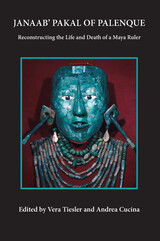 Janaab' Pakal of Palenque: Reconstructing the Life and Death of a Maya Ruler
Edited by Vera Tiesler and Andrea Cucina
University of Arizona Press, 2006 Excavations of Maya burial vaults at Palenque, Mexico, half a century ago revealed what was then the most extraordinary tomb finding of the pre-Columbian world; its discovery has been crucial to an understanding of the dynastic history and ideology of the ancient Maya. Over the years, new analytical tools introduced uncertainties regarding earlier interpretations of the findings, and a reanalysis of the remains of the ruler Janaab’ Pakal using contemporary methodologies has led to new interpretations of former accounts of his life and death.
This volume communicates the broad scope of applied interdisciplinary research conducted on the Pakal remains to provide answers to old disputes over the accuracy of both skeletal and epigraphic studies, along with new questions in the field of Maya dynastic research. Contributions by scholars in epigraphy, anthropology, and bioarchaeology bring to light new evidence regarding the ruler’s age, clarify his medical history and the identification of the remains found with him, reevaluate his role in life, and offer modern insights into ritual and sacrificial practices associated with Pakal.
The book leads readers through the history of Pakal’s discovery, skeletal analysis, and interpretation of Maya biographies, and also devotes considerable attention to the tomb of the “Red Queen” discovered at the site. Findings from the new Transition Analysis aging method, histomorphometric analysis, and taphonomic imagery are presented to shed new light on the perplexing question of Pakal’s age at death. Royal Maya life and death histories from the written record are also analyzed from a regional perspective to provide a broad panorama of the twisted power politics of rulers’ families and the entangled genealogies of the Maya Classic period.
A benchmark in biological anthropology, this volume reconsiders assumptions concerning the practices and lives of Maya rulers, posing the prospect that researchers too often find what they expect to find. In presenting an updated study of a well-known personage, it also offers innovative approaches to the biocultural and interdisciplinary re-creation of Maya dynastic history.
Contributors
Jesper K. Boldseh
Jane E. Buikstra
James H. Burton
Andrea Cucina
Nikolai Grube
Patricia Hernández
Lourdes Márquez
Simon Martin
George R. Milner
T. Douglas Price
Arturo Romano
Carlos Serrano
Sam D. Stout
Margaret Streeter
Vera Tiesler
John W. Verano
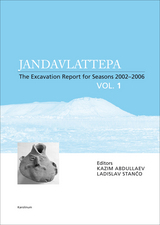 Jandavlattepa, Vol. I: The excavation report for seasons 2002-2006
Edited by Ladislav Stanco and Kazim Abdullaev
Karolinum Press, 2012 Central Asia became a forefront of international archaeological research early in the 1990s. Several respected archaeological teams gradually established their projects throughout post-Soviet republics of Central Asia, including Uzbekistan. In 2002 this effort was joined by a small Czech-Uzbekistani team aiming to begin an archaeological investigation of the northwestern part of ancient Bactria, particularly in the area of Sherabad oasis, with its major site Jandavlattepa. The focus of this publication is to present some newly discovered data in the field of Bactrian archaeology of Pre-Islamic periods and to shed additional light on different aspects of an understanding of its material culture, primarily in the transitional period between the Kushan and early medieval times. The present title represents a pilot volume, which will be followed up with two additional volumes.
 Jane Addams: A BIOGRAPHY
James Weber LinnIntroduction by Anne Firor Scott
University of Illinois Press, 1935 Jane Addams is most widely remembered as a founder of Hull House, but her social vision extended far beyond Chicago's Halsted Street. The first real adventurer in the unexplored territory of social amelioration in America, Addams worked tirelessly on behalf of a multitude of social causes, including industrial and educational reform, drug laws, sanitation, disaster relief, and food purity. In 1931 she won the Nobel Prize for Peace, a tribute to the decades of energy and eloquence she devoted to eradicating intolerance and elevating human life to a more humane standard.
James Weber Linn's life of this forceful public figure offers a rare glimpse of the private Addams, from her childhood and schooling through her first efforts in public service and her rise to a position of national influence. Linn's biography is based on Addams's personal papers, which she turned over to him before she died: files of her manuscripts, published and unpublished, along with all of her letters and papers, from her first valentine to her last speech. Out of this treasure trove, in combination with Addams's substantial published works, he has written a unique life of his aunt, beautifully illuminating her private reflections and inner strength as well as her formidable public persona.
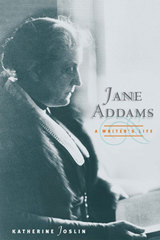 Jane Addams, a Writer's Life
Katherine Joslin
University of Illinois Press, 2003 Jane Addams, a Writer's Life is an expansive, revealing, and refreshing reexamination of the renowned reformer as an imaginative writer. Jane Addams is best known for her groundbreaking social work at Hull-House, the force of her efforts toward Progressive political and social reform, and the bravery of her commitment to pacifism, for which she received the Nobel Peace Prize. Katherine Joslin moves beyond this history to present Addams as a literary figure, one whose writing employed a synthesis of fictional and analytical prose that appealed to a wide audience. Joslin traces Addams's style from her early works, Philanthropy and Social Progress and her contributions to Hull House Maps and Papers, influenced by Florence Kelley, to her modernist and experimental last books, The Second Twenty Years at Hull-House and My Friend, Julia Lathrop, placing Addams in the context of other Chicago writers including Theodore Dreiser, Upton Sinclair, Harriet Monroe, Frank Norris and James T. Farrell. Joslin's close readings showcase Addams's distinguishing literary devices, such as using stories about people rather than sociological argument to make moral points. As Joslin pursues the argument that Addams's power as a public figure stemmed from the success of her books and essays, Addams herself emerges as a literary woman.
Jane Addams and the Practice of Democracy
Edited by Marilyn Fischer, Carol Nackenoff, and Wendy Chmielewski
University of Illinois Press, 2008 Using a rich array of newly available sources and contemporary methodologies from many disciplines, the ten original essays in this volume give a fresh appraisal of Addams as a theorist and practitioner of democracy. In an increasingly interdependent world, Addams's life work offers resources for activists, scholars, policy makers, and theorists alike. This volume demonstrates how scholars continue to interpret Addams as a model for transcending disciplinary boundaries, generating theory out of concrete experience, and keeping theory and practice in close and fruitful dialogue. Contributors are Harriet Hyman Alonso, Victoria Bissell Brown, Wendy Chmielewski, Marilyn Fischer, Shannon Jackson, Louise W. Knight, Carol Nackenoff, Karen Pastorello, Wendy Sarvasay, Charlene Haddock Seigfried, and Camilla Stivers.
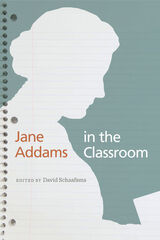 Jane Addams in the Classroom
Edited by David Schaafsma
University of Illinois Press, 2014 Once intent on being good to people, Jane Addams later dedicated herself to the idea of being good with people, establishing mutually-responsive and reciprocal relationships with those she served at Hull House. The essays in Jane Addams in the Classroom explore how Addams's life, work, and philosophy provide invaluable lessons for teachers seeking connection with their students. Balancing theoretical and practical considerations, the collection examines Addams's emphasis on listening to and learning from those around her and encourages contemporary educators to connect with students through innovative projects and teaching methods. In the first essays, Addams scholars lay out how her narratives drew on experience, history, and story to explicate theories she intended as guides to practice. Six teacher-scholars then establish Addams's ongoing relevance by connecting her principles to exciting events in their own classrooms. An examination of the Jane Addams Children's Book Award and a fictional essay on Addams's work and ideas round out the volume. Accessible and wide-ranging, Jane Addams in the Classroom offers inspiration for educators while adding to the ongoing reconsideration of Addams's contributions to American thought. Contributors include Todd DeStigter, Lanette Grate, Susan Griffith, Lisa Junkin, Jennifer Krikava, Lisa Lee, Petra Munro, Bridget O'Rourke, David Schaafsma, Beth Steffen, Darren Tuggle, Erin Vail, and Ruth Vinz.
 Jane Addams: The Most Dangerous Woman in America
Marlene Targ Brill
Ohio University Press, 2024 As part of our Biographies for Young Readers series for middle-grade readers, this book explains who Jane Addams was and why she caused such a stir in the United States and worldwide. The story follows Addams from her first realization of the unfairness that limited the lives, livelihoods, and health of disadvantaged people in the late 1800s to her becoming one of the most beloved—and most disliked—women of her day. She worked to create a more peaceful, fair world for all people, no matter their race, color, nationality, or gender. Along her journey, Addams cofounded Hull-House, the most celebrated settlement house in the United States, and she became a motivating author, speaker, and women’s rights and peace advocate. She worked tirelessly on community, state, and national levels to promote women’s, workers’, and children’s rights, and she spoke passionately against the evils of war. Addams devoted her activities and writings to championing programs for these and other humanitarian causes. Votes for women! Equal rights for African Americans! Good schools and a healthy environment for children! No one—not millionaires, presidents, or the FBI—could stand in the way of her quest for justice. Addams became one of few women worldwide to earn a Nobel Peace Prize. Her efforts to improve social services and communities and to train leaders to carry out this work led to the opening of the first professional school of social work—named in her honor—at the University of Illinois, Chicago. Her writing, teaching, and actions were based on the belief that “without the advance and improvement of the whole, no man can hope for any lasting improvement in his own moral or material individual condition.”
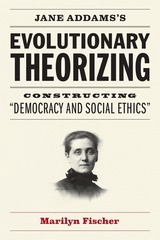 Jane Addams's Evolutionary Theorizing: Constructing “Democracy and Social Ethics”
Marilyn Fischer
University of Chicago Press, 2019 In Jane Addams’s Evolutionary Theorizing, Marilyn Fischer advances the bold and original claim that Addams’s reasoning in her first book, Democracy and Social Ethics, is thoroughly evolutionary. While Democracy and Social Ethics, a foundational text of classical American pragmatism, is praised for advancing a sensitive and sophisticated method of ethical deliberation, Fischer is the first to explore its intellectual roots.
Examining essays Addams wrote in the 1890s and showing how they were revised for Democracy and Social Ethics, Fischer draws from philosophy, history, literature, rhetoric, and more to uncover the array of social evolutionary thought Addams engaged with in her texts—from British socialist writings on the evolution of democracy to British and German anthropological accounts of the evolution of morality. By excavating Addams’s evolutionary reasoning and rhetorical strategies, Fischer reveals the depth, subtlety, and richness of Addams’s thought.
 Jane Austen
Tony Tanner
Harvard University Press, 1986 Devoted fans and scholars of Jane Austen—as well as skeptics—will rejoice at Tony Tanner’s superb book on the incomparable novelist. Distilling twenty years of thinking and writing about Austen, Tanner treats in fresh and illuminating ways the questions that have always occupied her most perceptive critics. How can we reconcile the limited social world of her novels with the largeness of her vision? How does she deal with depicting a once-stable society that was changing alarmingly during her lifetime? How does she express and control the sexuality and violence beneath the well-mannered surface of her milieu? How does she resolve the problems of communication among characters pinioned by social reticences?
Tanner guides us through Austen’s novels from relatively sunny early works to the darker, more pessimistic Persuasion and fragmentary Sanditon—a journey that takes her from acceptance of a society maintained by landed property, family, money, and strict propriety through an insistence on the need for authentication of these values to a final skepticism and even rejection. In showing her progress from a parochial optimism to an ability to encompass her whole society, Tanner renews our sense of Jane Austen as one of the great novelists, confirming both her local and abiding relevance.
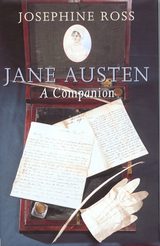 Jane Austen: A Companion
Ross, Josephine
Rutgers University Press, 2003 The only best-selling authors in Jane Austen's league in the English language today are Shakespeare and Dickens. In the twenty-first century her boundless appeal continues to grow following the enormously successful television and film adaptations of Mansfield Park, Pride and Prejudice, Emma, Persuasion, and Sense and Sensibility.
This illuminating, entertaining, up-to-date companion is the only general guide to Jane Austen, her work, and her world. Josephine Ross explores the literary scene during the time Austen's works first appeared: the books considered classics then, the "horrid novels" and romances, and the grasping publishers. She looks at the architecture and décor of Austen's era that made up "the profusion and elegance of modern taste." Regency houses for instance, Chippendale furniture, and "picturesque scenery." On a smaller scale she answers questions that may baffle modern readers. What, for example, was "hartshorn"? How did Lizzy Bennet "let down" her gown to hide her muddy petticoat? Ross shows us the fashions, and the subtle ways Jane Austen used clothes to express character. Courtship, marriage, adultery, class and "rank," mundane tasks of ordinary life, all appear, as does the wider political and military world.
This book will add depth to all readers' enjoyment of Jane Austen, whether confirmed addicts or newcomers wanting to learn about one of the world's most popular and enduring writers.
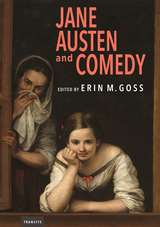 Jane Austen and Comedy
Erin Goss
Bucknell University Press, 2019 Jane Austen and Comedy takes for granted two related notions. First, Jane Austen’s books are funny; they induce laughter, and that laughter is worth attending to for a variety of reasons. Second, Jane Austen’s books are comedies, understandable both through the generic form that ends in marriage after the potential hilarity of romantic adversity and through a more general promise of wish fulfillment. In bringing together Austen and comedy, which are both often dismissed as superfluous or irrelevant to a contemporary world, this collection of essays directs attention to the ways we laugh, the ways that Austen may make us do so, and the ways that our laughter is conditioned by the form in which Austen writes: comedy. Jane Austen and Comedy invites reflection not only on her inclusion of laughter and humor, the comic, jokes, wit, and all the other topics that can so readily be grouped under the broad umbrella that is comedy, but also on the idea or form of comedy itself, and on the way that this form may govern our thinking about many things outside the realm of Austen’s work.
Published by Bucknell University Press. Distributed worldwide by Rutgers University Press.
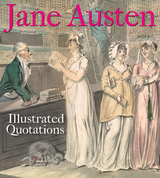 Jane Austen: Illustrated Quotations
Edited by the Bodleian Library
Bodleian Library Publishing, 2017 “Next week I shall begin my operations on my hat, on which you know my principal hopes of happiness depend.”—from a letter to Cassandra, October 27, 1798
“You express so little anxiety about my being murdered under Ash Park Copse by Mrs. Hulbert’s servant, that I have a great mind not to tell you whether I was or not.”—from a letter to Cassandra, January 8, 1799
“Single women have a dreadful propensity for being poor, which is one very strong argument in favour of matrimony.”—from a letter to Fanny Knight, March 13, 1817
Much loved for the romantic plot lines and wryly amusing social commentary that spring from the pages of Pride and Prejudice, Mansfield Park, Emma, and her other novels Jane Austen was also a prolific letter writer and penned missives on many subjects. To her sister Cassandra she wrote with candid humor about the effects of the Peninsular War (“How horrible it is to have so many people killed! And what a blessing that one cares for none of them!”), about her dislike of parties and social obligations (“We are to have a tiny party here tonight. I hate tiny parties, they force one into constant exertion.”), and about her impressions of London (“Here I am once more in this scene of dissipation and vice, and I begin to find already my morals corrupted.”). Austen’s characters likewise offer commentary on topics like moral character, gender inequality, ageing, and the disappointments of marriage. In Pride and Prejudice, for example, Charlotte Lucas cautions Elizabeth Bennet, “It is better to know as little as possible of the defects of the person with whom you are about to pass your life.”
Drawing together fifty quotations from Jane Austen’s letters and novels with illustrations that illuminate everyday aspects of life in the Georgian era, this beautifully produced volume will make the perfect gift for Janeites.
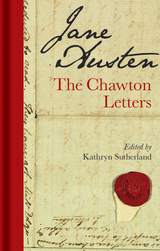 Jane Austen: The Chawton Letters
Edited by Kathryn Sutherland
Bodleian Library Publishing, 2017 The life of Jane Austen has fascinated the millions of readers around the world who cherish her work. A new collection presents an intimate portrait of Austen in her own words, showing the many details of her life that found echoes in her fiction, especially her keen observations of the “little matters”—the routines of reading, dining and taking tea, paying visits to family and friends, and walking to the shops or to send the post.
Brilliantly edited by Kathryn Sutherland, Jane Austen: The Chawton Letters uses Austen’s letters drawn from the collection held at Jane Austen’s House Museum at her former home in Chawton, Hampshire, to tell her life story. At age twenty-five, Austen left her first home, Steventon, Hampshire, for Bath. In 1809, she moved to Chawton, which was to be her home for the remainder of her short life. In her correspondence, we discover Austen’s relish for her regular visits to the shops and theaters of London, as well as the quieter routines of village life. We learn of her anxieties about the publication of Pride and Prejudice, her care in planning Mansfield Park, and her hilarious negotiations over the publication of Emma. (To her sister, Cassandra, Austen calls her publisher John Murray, “a Rogue, of course, but a civil one.”) Throughout, the Chawton letters testify to Jane’s close ties with her family, especially her sister, and the most moving letter is written by Cassandra just days after Jane’s death. The collection also reproduces pages from the letters in Austen’s own distinctive hand.
This collection makes a delightful modern-day keepsake from one of the world’s best-loved writers on the two-hundredth anniversary of her death.
Jane Austen: Women, Politics, and the Novel
Claudia L. Johnson
University of Chicago Press, 1990 "The best (and the best written) book about Austen that has appeared in the last three decades."—Nina Auerbach, Journal of English and Germanic Philology
"By looking at the ways in which Austen domesticates the gothic in Northanger Abbey, examines the conventions of male inheritance and its negative impact on attempts to define the family as a site of care and generosity in Sense and Sensibility, makes claims for the desirability of 'personal happiness as a liberating moral category' in Pride and Prejudice, validates the rights of female authority in Emma, and stresses the benefits of female independence in Persuasion, Johnson offers an original and persuasive reassessment of Jane Austen's thought."—Kate Fullbrook, Times Higher Education Supplement
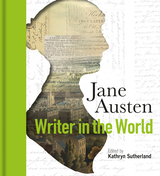 Jane Austen: Writer in the World
Edited by Kathryn Sutherland
Bodleian Library Publishing, 2017 The life of Jane Austen has fascinated the millions of readers around the world who cherish her work. A new collection presents an intimate portrait of Austen through her personal possessions, showing the many details of her life that found echoes in her fiction, especially her keen observations of the “little matters”—the routines of reading, dining and taking tea, paying visits to family and friends, and walking to the shops or to send the post.
Brilliantly edited by Kathryn Sutherland, Jane Austen: Writer in the World offers a life story told through the author's personal possessions. In her teenage notebooks, literary jokes give a glimpse of her family’s shared love of reading and satire, which can be seen in the subtler humor of Austen’s published work. Pieces from Austen’s hand-copied collection of sheet music reveal how music was used to create networks far more intricate than the simple pleasures of home recital. A beautiful brown silk pelisse-coat, together with lively letters between Austen and Cassandra, give insight into her views on fashion. All feature in this lavishly illustrated collection, along with homemade booklets in which she composed her novels, portraits made of Austen during her lifetime, and much more. Also included are objects associated with the era in which Austen lived: newspaper articles, naval logbooks, and contemporary political cartoons, shedding light on Austen’s wider social and political worlds.
This collection makes a delightful modern-day keepsake from one of the world’s best-loved writers on the two-hundredth anniversary of her death.
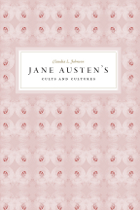 Jane Austen's Cults and Cultures
Claudia L. Johnson
University of Chicago Press, 2012 Jane Austen completed only six novels, but enduring passion for the author and her works has driven fans to read these books repeatedly, in book clubs or solo, while also inspiring countless film adaptations, sequels, and even spoofs involving zombies and sea monsters. Austen’s lasting appeal to both popular and elite audiences has lifted her to legendary status. In Jane Austen’s Cults and Cultures, Claudia L. Johnson shows how Jane Austen became “Jane Austen,” a figure intensely—sometimes even wildly—venerated, and often for markedly different reasons. Johnson begins by exploring the most important monuments and portraits of Austen, considering how these artifacts point to an author who is invisible and yet whose image is inseparable from the characters and fictional worlds she created. She then passes through the four critical phases of Austen’s reception—the Victorian era, the First and Second World Wars, and the establishment of the Austen House and Museum in 1949—and ponders what the adoration of Austen has meant to readers over the past two centuries. For her fans, the very concept of “Jane Austen” encapsulates powerful ideas and feelings about history, class, manners, intimacy, language, and the everyday. By respecting the intelligence of past commentary about Austen, Johnson shows, we are able to revisit her work and unearth fresh insights and new critical possibilities. An insightful look at how and why readers have cherished one of our most beloved authors, Jane Austen’s Cults and Cultures will be a valuable addition to the library of any fan of the divine Jane.
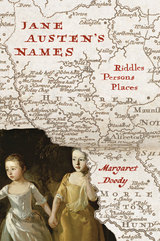 Jane Austen's Names: Riddles, Persons, Places
Margaret Doody
University of Chicago Press, 2015 In Jane Austen’s works, a name is never just a name. In fact, the names Austen gives her characters and places are as rich in subtle meaning as her prose itself. Wiltshire, for example, the home county of Catherine Morland in Northanger Abbey, is a clue that this heroine is not as stupid as she seems: according to legend, cunning Wiltshire residents caught hiding contraband in a pond capitalized on a reputation for ignorance by claiming they were digging up a “big cheese”—the moon’s reflection on the water’s surface. It worked.
In Jane Austen’s Names, Margaret Doody offers a fascinating and comprehensive study of all the names of people and places—real and imaginary—in Austen’s fiction. Austen’s creative choice of names reveals not only her virtuosic talent for riddles and puns. Her names also pick up deep stories from English history, especially the various civil wars, and the blood-tinged differences that played out in the reign of Henry VIII, a period to which she often returns. Considering the major novels alongside unfinished works and juvenilia, Doody shows how Austen’s names signal class tensions as well as regional, ethnic, and religious differences. We gain a new understanding of Austen’s technique of creative anachronism, which plays with and against her skillfully deployed realism—in her books, the conflicts of the past swirl into the tensions of the present, transporting readers beyond the Regency.
Full of insight and surprises for even the most devoted Janeite, Jane Austen’s Names will revolutionize how we read Austen’s fiction.
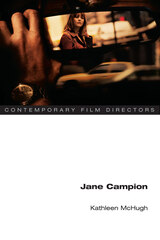 Jane Campion
Kathleen McHugh
University of Illinois Press, 2006 In considering Jane Campion's early award-winning short films on through international sensation The Piano and beyond, Kathleen McHugh traces the director's distinctive visual style as well as her commitment to consistently renovating the conventions of "women's films." By refusing to position her female protagonists as victims, McHugh argues, Campion scrupulously avoids the moral structures of melodrama, and though she often works with the narratives, mise-en-scene, and visual tropes typical of that genre, her films instead invite a distanced or even amused engagement. Jane Campion concludes with four brief, revelatory interviews and a filmography. Campion spoke twice with Michel Ciment—after the screening of her short and medium-length films at the Cannes Film Festival 1986, and three years later, after the Cannes screening of Sweetie. Judith Lewis narrates a Beverly Hills interview with Campion that followed the release of Holy Smoke, and Lizzie Francke's interview, reprinted from Sight and Sound,centers on Campion's film In the Cut, adapted from Susanna Moore's novel. A volume in the series Contemporary Film Directors, edited by James R. Naremore
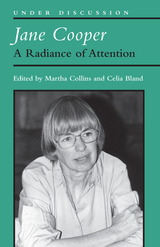 Jane Cooper: A Radiance of Attention
Martha Collins and Celia Bland, editors
University of Michigan Press, 2019 For her five volumes of poetry over the course of her career, Jane Cooper (1924–2007) was deeply admired by her contemporaries, and teaching at Sarah Lawrence College for nearly forty years, she served as a mentor to many aspiring poets. Her elegant, honest, and emotionally and formally precise poems, often addressing the challenges of women’s lives—especially the lives of women in the arts—continue to resonate with a new generation of readers.
Martha Collins and Celia Bland bring together several decades’ worth of essential writing on Cooper’s poetry. While some pieces offer close examination of Cooper’s process or thoughtful consideration of the craft of a single poem, the volume also features reviews of her collections, including a previously unpublished piece on her first book, The Weather of Six Mornings (1969), by James Wright, a lifelong champion of her work. Marie Howe, Jan Heller Levi, and Thomas Lux, among others, share personal remembrances of Cooper as a teacher, colleague, and inspiration. L. R. Berger’s moving tribute to Cooper’s final days closes the volume. This book has much to offer for both readers who already love Cooper’s work and new readers, especially among younger poets, just discovering her enduring poems.
Jane Fonda: There's a Great Deal to Say
Marilyn S. Greenwald
Rutgers University Press Jane Fonda: There's a Great Deal to Say guides readers through the two sides of one of Hollywood’s most intriguing figures: actor and activist Jane Fonda. Using original archival material from Fonda’s own personal papers and from cinema archives, the author tells the riveting tale of how Fonda had come to view acting as a “side gig” that gives her a worldwide platform to convey her personal and political views. Readers will be introduced to the people, role models and events in Fonda's life that led her to believe movies can serve as an influential story-telling tool that can influence public opinion, change minds and trigger social change. The book traces how Fonda has evolved over more than five decades to stay on the path of activism, at times sacrificing her career, her personal safety, and even her relationship with her family.
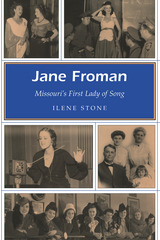 Jane Froman: Missouri's First Lady of Song
Ilene Stone
University of Missouri Press, 2003 Once asked to name the ten best female singers, the renowned musical producer Billy Rose replied, “There is Jane Froman and nine others.” A legend in her time, Jane Froman (1907–1980) was one of Missouri’s greatest success stories. Her singing career, which spanned over three decades, included radio and television, recordings, nightclub performances, Broadway shows, and Hollywood movies. Born in University City, Froman spent her childhood in the small town of Clinton and her adolescence in Columbia. After earning her associate degree from Christian (now Columbia) College, she auditioned as a vocalist for WLW, a Cincinnati radio station, and in 1934 was voted the top “girl singer” of the day in a poll of listeners. At the height of her career, during World War II, Froman volunteered to travel for the USO. On February 22, 1943, her plane crashed into the Tagus River near Lisbon, Portugal. Although she suffered horrible injuries that plagued her for the rest of her life, she continued her singing career. On crutches, she entertained the troops, giving ninety-five shows throughout Europe. Her courageous return was the focus of the 1952 movie With a Song in My Heart,starring Susan Hayward. For scenes that required singing performances, Froman sang the songs through dubbing, and the movie soundtrack became a best-selling record album. Froman’s popularity led to her own television show from 1952 to 1955. In 1961, Froman retired from singing and returned to Columbia, Missouri, where she was active in volunteer work and lived out her remaining years. Drawing upon an autobiography that Froman started but never finished, Ilene Stone skillfully uses the singer’s own words, along with other resource materials and extensive interviews with people who knew Froman, to produce the first biography of this extraordinary woman. Written in a clear and accessible style, Jane Froman: Missouri’s First Lady of Song will be of great value to anyone interested in Missouri history, women’s studies, or the history of popular entertainment in the twentieth century.
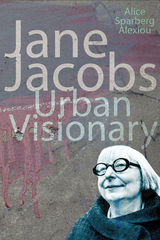 Jane Jacobs: Urban Visionary
Alice Sparberg Alexiou
Rutgers University Press, 2006 Today, we take for granted the wisdom of renovating old factory buildings into malls or condos, of making once decaying waterfronts into vibrant public spaces, of protecting historic buildings under landmark laws, and of building public housing on a human scale rather than as high-rises. In contemporary cities, it is now common for community groups to plant gardens in empty lots and to buy abandoned apartment buildings from the city for a dollar and fix them up.
But these and other urban planning policies and practices have not always been accepted. Before they became widespread, they were the visionary ideas of the writer and urban commentator Jane Jacobs. Best known in the United States for her path-breaking efforts to preserve the character of Greenwich Village, Jacobs is the author of the classic 1961 book, The Death and Life of Great American Cities, one of the most influential works ever published in urban studies. The architectural critic Herbert Muschamp wrote in the New York Times that its publication “was one of twentieth-century architecture’s most traumatic events. Its impact is still felt in cities across the land.”
In this analysis of Jane Jacobs’s ideas and work, Alice Sparberg Alexiou tells the remarkable story of a woman who without any formal training in planning became a prominent spokesperson for sensible urban change. Besides writing the seminal book about contemporary cities, Jacobs organized successful community battles in New York against powerful interests. She resisted urban renewal in the West Village in the 1960s, helped defeat the Lower Manhattan Expressway, advocated the pleasures of street life that she called “sidewalk ballet,” and opposed the original Twin Towers plans. She was also active in the anti–Vietnam War movement, which eventually led her to move to Canada. There she continued her grass-roots activism, including helping to prevent the construction of an expressway that would have cut through several neighborhoods in Toronto.
Based on a rich array of interviews and primary source material, this book brings long-overdue attention to Jacobs’s far-reaching influence as an original thinker and effective activist.
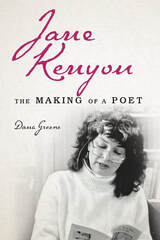 Jane Kenyon: The Making of a Poet
Dana Greene
University of Illinois Press, 2023 Demystifying the “Poet Laureate of Depression” Pleasure-loving, sarcastic, stubborn, determined, erotic, deeply sad--Jane Kenyon’s complexity and contradictions found expression in luminous poems that continue to attract a passionate following. Dana Greene draws on a wealth of personal correspondence and other newly available materials to delve into the origins, achievement, and legacy of Kenyon’s poetry and separate the artist’s life story from that of her husband, the award-winning poet Donald Hall. Impacted by relatives’ depression during her isolated childhood, Kenyon found poetry at college, where writers like Robert Bly encouraged her development. Her graduate school marriage to the middle-aged Hall and subsequent move to New Hampshire had an enormous impact on her life, moods, and creativity. Immersed in poetry, Kenyon wrote about women’s lives, nature, death, mystical experiences, and melancholy--becoming, in her own words, an “advocate of the inner life.” Her breakthrough in the 1980s brought acclaim as “a born poet” and appearances in the New Yorker and elsewhere. Yet her ongoing success and artistic growth exacerbated strains in her marriage and failed to stave off depressive episodes that sometimes left her non-functional. Refusing to live out the stereotype of the mad woman poet, Kenyon sought treatment and confronted her illness in her work and in public while redoubling her personal dedication to finding pleasure in every fleeting moment. Prestigious fellowships, high-profile events, residencies, and media interviews had propelled her career to new heights when leukemia cut her life short and left her husband the loving but flawed curator of her memory and legacy. Revelatory and insightful, Jane Kenyon offers the first full-length biography of the elusive poet and the unquiet life that shaped her art.
|
|
